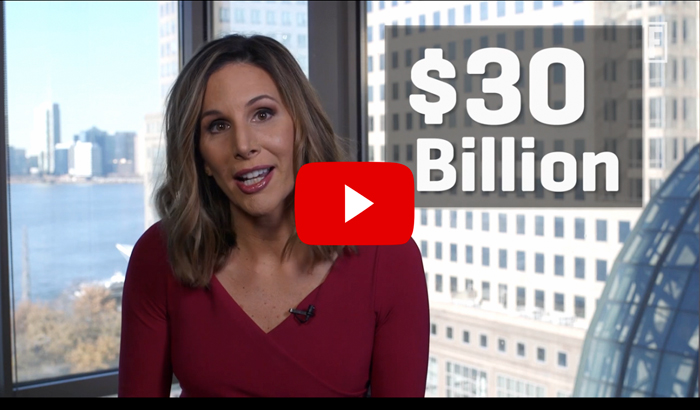Why Do I Need A Brand? I’ve Got A Great Product and a Logo
/0 Comments/in Brand Strategy, Branding /by Lorraine CarterWhy do I need a brand?
Good question! It’s one we’re often asked because it seems that somewhere along the way, ‘brand’, ‘logo’ and ‘branding’ became confused.
It’s critical to understand that branding is NOT marketing or design but the bedrock strategy supporting and directing your whole business so your brand strategy is fundamental to your business’s success, longevity and ongoing profitability.
Strategically-minded business managers realize that to create a properly valued brand, they must present customers with emotionally based, engaging, and compelling brand experiences that go beyond the service or product on the shelf.
Why Do I Need a Brand? Because Brands Add Value
It’s worth pointing out that a brand adds real value….now and in the future.
Dave Bookbinder, Director of Valuation Services at EisnerAmper, writes, “Like most things in valuation, the value of a brand is a forward-looking exercise, where the value of the asset today is equal to the present value of the asset’s cash flows in the future. In the case of a brand, the ‘cash flows’ are typically sales.” [1]
A brand adds asset value beyond tangible assets such as inventory, machinery, buildings, and land. Intangible assets are valued as intellectual property.
According to Investopedia, “…A company’s brand can be one of its most valuable assets. Brand value is intangible, making it difficult to quantify, but common approaches take into account the cost it would take to build a similar brand, the cost of royalties to use a brand name, and cash flow of comparative unbranded businesses.
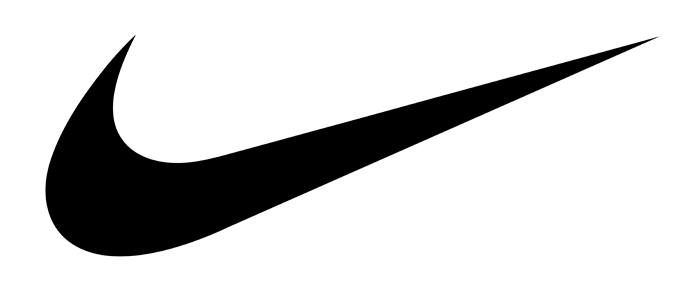
Image via Wikimedia Commons
Nike Inc., for example, owns one of the world’s most instantly recognizable logos, the “swoosh.” Forbes estimated Nike’s brand to be worth $29.6 billion in 2017, despite that fact that – in a world devoid of brand perception – taking the swoosh off Nike’s shoes and apparel would change nothing about their comfort or boost to athletes’ performance.” [2]
Brand Action Points for Entrepreneurs and Business Owners Who Are Questioning ‘Why Do I Need A Brand?’
Step 1: Once you go from having an idea to creating a product or service, you must also create your branding, aligned with your business strategy. This is what provides direction for all marketing, communications and design, both internally within the business itself and also on the customer-facing front. (Note: design alone is NOT branding!)
In fact, a product or service is merely a generic entity until it is given meaning in people’s minds—through a brand.
Step 2: Build your brand using the brand codification process—mapping out your brand strategically to attract your ideal customers. As with any plan, it’s important to look down the road ahead.
We’re all busy so building the bedrock brand strategy supporting and directing your whole business to ensure it’s growth and sustained longevity may not be your top skillset. If you’d like professional branding input and want access to a detailed overview of what’s key in the brand strategy context to grow your business then get in touch? Alternatively book one of our transformational workshops, brand building intensives or masterclasses.
The Persona Brand Building Blueprint™ Mastermind empowers you to build your brand strategy, raise the visibility of your brand, increase profitability, reduce customer acquisition costs and position your brand as the №1 choice for your customers.
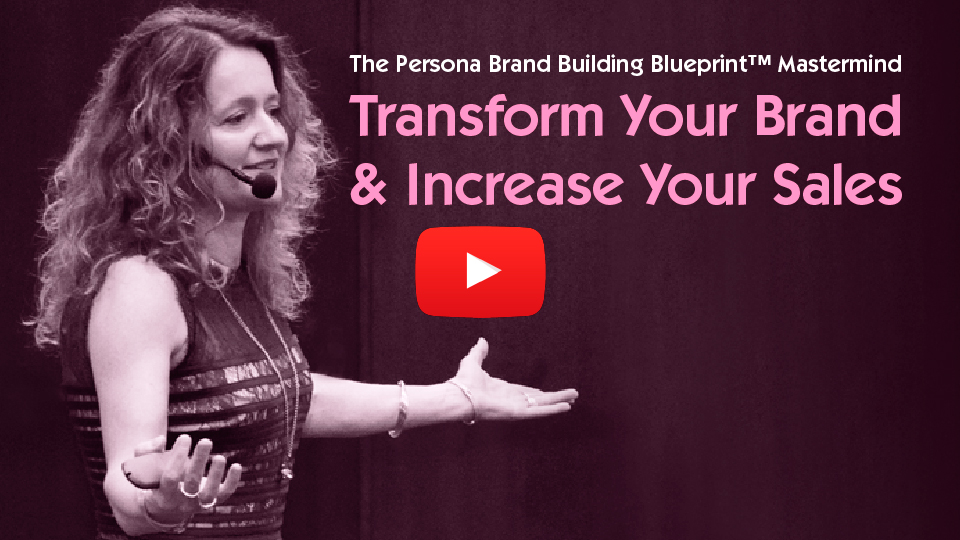
Build your standout brand at the Persona Brand Building Blueprint™ Mastermind with Lorraine Carter
Related: Design is Not Branding, 10 Things Every Business Owner and Entrepreneur Should Know
Creating a Brand…and Everything That Embraces
Your brand needs to be thinking with its heart because emotion wins the battle for a customer’s wallet.
Branding involves a wide range of fundamental concepts. Most importantly, your brand is the cornerstone and foundation that your business is built upon.
Watch: “What is Branding?”
Related: Use Psychology in Your Brand Strategy to Create Irresistible Brand Experiences and Increase Sales
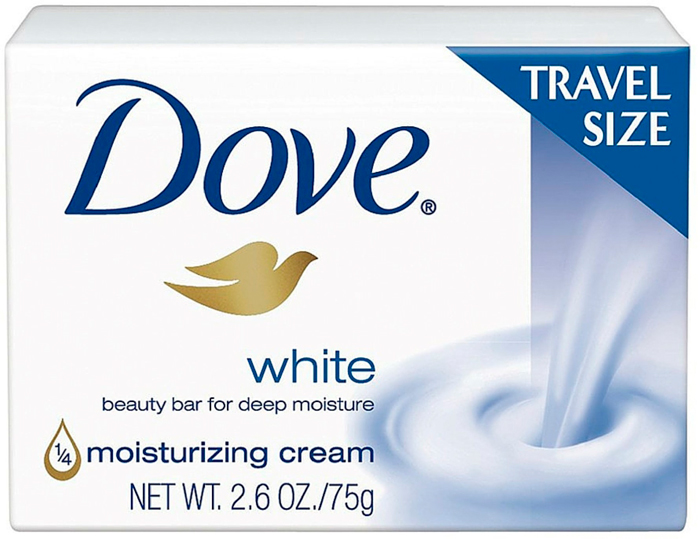
Image via Wikimedia Commons
Think about Dove soap. There’s really nothing inspiring about a bar of soap to wash your hands and face; wouldn’t any inexpensive no-name product do the job? Yet, Dove sells more $4 billion worth of soap around inspirational brand pillars such as “Real Beauty.”

Image via Patagonia
Think about Patagonia. They make jackets for outdoor activities to keep you warm, amongst other things. However, what’s a key factor in driving increased sales? A brand foundation promising to protect the environment, fight global warming, keep their carbon footprint to a minimum and do minimal damage to the planet while making the products their customers love. This mission is central to the Patagonia brand foundations and consequently attracts customers with similarly aligned values. Their continuous endeavours and brand activism are what also help maintain customer loyalty and referral amongst a like-minded community.
Note that just because something exists or can be found on the shelf doesn’t make it a brand; ‘enhancing’ it by slapping on a logo doesn’t create a brand either. Therefore:
- A logo is an identification via a recognizable mark or symbol.
- A brand is the emotional experience someone feels when they interact with a product or service because emotion drives purchase.
Remember: A brand on its own is not a logo.Your logo is merely your visual identifier, not your brand. |
When we think of a logo as the ID card in your wallet, there’s no confusion about the role it plays—and cannot play—when compared to the actual individual it represents.
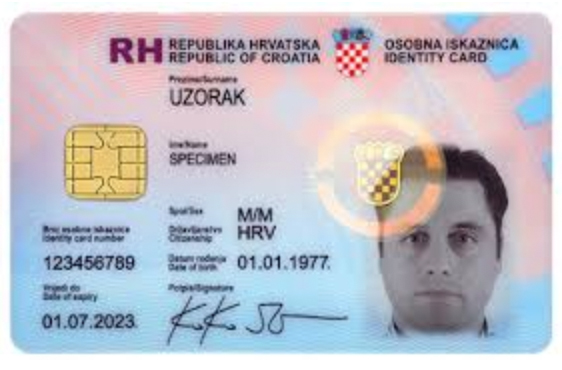
Image via Wikimedia Commons
A brand is required to identify the unique experience your product or service delivers and its key points of distinction from the competition.
Related: Top 10 Brands for Customer Experience and What You Can Learn From Them
Why Do I Need A Brand? Because It’s The Entity Through Which You Articulate Your Brand Positioning and Messaging To Attract Your Ideal Customers
The important considerations are:
- Whether or not your brand has a foundation to underpin the bedrock of your business
- What exactly are the pillars of that foundation supporting your business and,
- How is it communicated?
Looking a bit deeper, to ensure the clarity of a brand, the real questions are:
- What does your brand stand for?
- What does your brand promise to new and existing customers?
- What’s your brand for?
- What problem does your brand solve?
- How is your brand different?
- How does your brand make people feel?
If you think you might benefit from some professional assistance in building your brand, take a look at our popular “Brand Building Workshops.” Feel free to get in touch. |
Why Do I Need A Brand?
10 Reasons Why Branding is a Must-Have
A brand is the mark of ownership and a symbol of its guarantee. A brand is not anonymous, it doesn’t hide behind a no-name white label, because:
- Branding creates customer emotion, connection and experiences
- Branding defines expectations
- Branding makes and consistently fulfils a promise
- Branding promotes recognition and recall
- Branding reveals your DNA, the essence on which your whole distinct offering is built
- Branding carves a standout position for your brand, product or service, in the market with its own unique selling points
- Branding tells your distinctly compelling story
- Branding attracts your ‘dream team’ and cultivates a positive internal culture
- Branding generates word-of-mouth referral and cultivates brand ambassadors, inherent champions of your brand
- Branding creates value and drives sales growth
Related: Brand Sponsorships, The Best Brand Ambassadors Are Already On Your Payroll
In this video, Hallmark Business Connections explains why connecting with customers through empathy is critical.
Why Do I Need A Brand? Because When the Bottle is Empty There is NO Brand, No Underlying Asset Value, No Longevity, No Premium Price Points
If the vision for your brand is not centred in a rich emotional connection with customers your brand may be visible, but it will lack personality. But a brand without personality is a brand without a soul — it’s just an empty container. As such, it fails to resonate and it cannot stimulate a purchase, no less a repeat purchase or ongoing growth.
Related: Personality Matters: Bringing Your Brand to Life to Grow Profits
Branding is the core DNA of your company – what makes it tick, the driving purpose behind everything you do and how you express your stand out brand personality at every touch point to engage your customers emotionally. Branding is the glue between your business and your customers.
Why Do I Need A Brand? Because branding is the Secret Sauce That Sells
We can agree broadly that:
- Cola is a refreshing drink
- Aspirin relieves a headache
- Cologne smells nice
Which one of these soft drinks would most people reach for on a grocery shelf? And why?
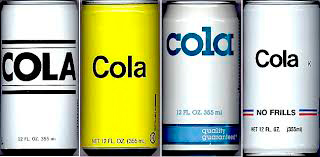
Image via Wikimedia Commons
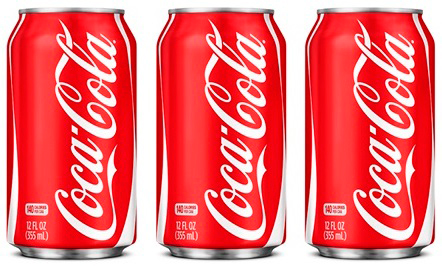
Image via The Coca-Cola Company
Which one of these pain relievers do most people reach for? And why?

Image via Columbia University Medical Centre
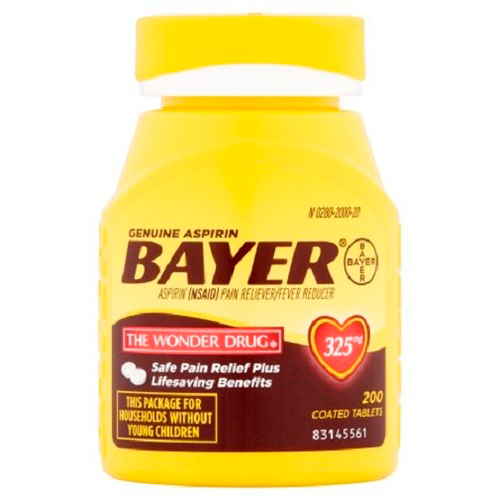
Image via Walmart
Or given the choice which one of these perfumes would most people prefer? And why?

Image via Wikimedia Commons

Image via Wikimedia Commons
Or insurance brokers?

Image via Wikimedia Commons

Image via Allstate Insurance
Related: 8 Huge Branding Trends in 2018, What’s New and Valuable?
The Un-Branded Generics
Cola, aspirin, cologne, and insurance are all useful consumer products. But none can stand on its own without communicating as a brand. A generic cola, aspirin, cologne and insurer lack the critical emotional factors that underpin and drive customer purchasing behaviour.
Nonetheless, the no-label packaging delivers a message in itself…if you’re thinking cheap lower price, you’re correct. A lower price is an excellent example of brand differentiation. However, pricing on its own is just one aspect of brand building and a race to the bottom unless you have very deep pockets and a very large mass market, high volume sales strategy.
To survive, grow and thrive, every brand needs an identity—and that is so much more than just a design, logo, and packaging. Here’s what is still missing so that your B2B or B2C product or service strongly stands out and resonates with your ideal customers, attracting them to purchase.
- Brand mission
- Brand meaning
- Brand values
- Brand positioning
- Brand personality
- Brand promise
- Brand story
- Brand purchaser personas
- Brand hierarchy structures
Do you want to make your brand stand out as a highly recognised, memorable and much-loved name? The Personality Profile Performer™ System is the perfect on-demand solution for you because it’s a step-by-step process empowering you to build your brand yourself and become more profitable. Get the Personality Profile Performer™ Programme here now so you can make your brand No.1 in your market. Discover more here.
Related: Brand Profiling, How Brand Performance and Purpose Are Inextricably Linked
Why Do I Need A Brand? How A Great Product or Service Delivers Via Branding
In the consumer product and service illustrations above, the branded products “talk” to us. There’s an emotional connection that goes way beyond the packaging. We feel we trust these brands and “know” them…and that our parents did, too.
Strong branding is underpinned by a compelling mission statement that defines the company’s purpose and standards. Examples as follows:

Image via Wikimedia Commons
- To refresh the world…
- To inspire moments of optimism and happiness…
- To create value and make a difference.
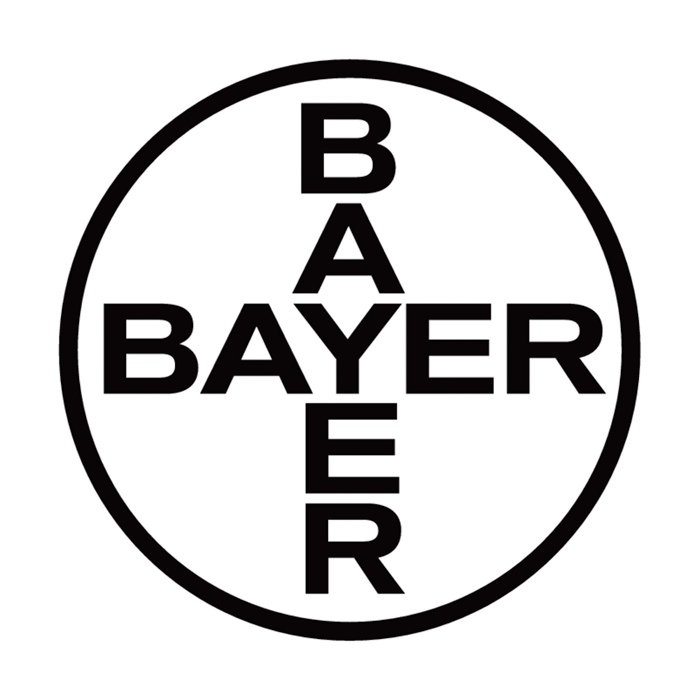
Image via Wikimedia Commons
Science for a Better Life

Image via Wikimedia Commons
“To be the Ultimate House of Luxury, defining style and creating desire,
now and forever.”

Image via Allstate Insurance
“To be the best…serving our customers by providing peace of mind and enriching their quality of life through our partnership in the management of the risks they face.”
Look closely at the logo for Allstate insurance. It symbolizes the tagline introduced in 1950 and in use ever since: “You’re in good hands with Allstate.” That’s a brand promise everyone can relate to.
Yet branding is so much more than just a mission statement or tagline. The answer to the question, “Do I need a brand or a visual identity?” is “Yes and yes to both.”
Small, Medium and Large Brands Matter
Size doesn’t matter. (Hint: But delightful customer experiences do matter.)
“Good stories give big voices to small ventures,” says digital marketing professional Neil Patel.[3]
At Persona Branding and Design, our mission is to empower business leaders, business owners and entrepreneurs to build their brands. And in working across multiple sectors with leaders in different countries around the world we sometimes hear misconceptions like this one: “Big names spend money on branding, small companies just get on with the job.”
Whether your team is in tech, retail, consumer goods, construction, professional services or another sector, your brand is your voice and it speaks for everything you do; your reputation depends on it.
In fact, your brand is your reputation. Jeff Bezos (founder of Amazon) says it is what people say about you when you are not in the room so your brand is essentially what people think and feel when they see or hear your name, engage with somebody from the organisation who in effect represents your brand and the experience that entails in meeting and exceeding your needs — or falling short!
All Brands Start Out Small
All products and services need a “why.”
For two Airbnb founders in 2008, that “why” was a need for cash which they met by renting out an air mattress on the floor of their apartment to two strangers who couldn’t get a hotel room during a big San Francisco design convention. Crazy idea?
Watch: The Story No One Believed – Brian Chesky, Co-Founder and CEO AirBnB
It has to start somewhere. The living room floor, a garage in Silicon Valley, or the back of a napkin in a coffee shop—like Harry Potter author JK Rowling— is as good a place as any for ideation.
Related: 10 Branding Tips From Silicon Valley on How to Be a Successful Startup Brand
Unicorns, those rare startups valued at over $1 billion USD (like Uber, Spotify, Airbnb), evolved from ideas to hugely successful global brands. Airbnb’s mid-2017 valuation was $31 billion USD.)
Related: Brand Disruption, Be the Disruptor or Be Defeated
“Unicorns often start as a brilliant technology solution to an unmet consumer need or they purposefully or inadvertently tap into a changing consumer trend,” counsels Kantar Millward Brown in their BrandZ annual report.[4]
Related: From Zero to Hero, How to Become a Must-Have Brand
Online and Offline Branding
As a small business owner or manager, you know that your community presence is far more important than it is for big brands that can rely more heavily on larger advertising budgets.
You may have a consumer-facing bricks and mortar establishment, you may trade as a B2B, or you may run a small internet business. Either way, you know how important a vibrant community, on and offline, together with word of mouth is.
Small businesses have lots of opportunities to connect with customers, building a strong brand through online and offline communities. And through their employees, too.
Related: The Age of Internal Branding and Selling It From the Inside Out
Having a great product or service is only the first step in the lifetime journey of your brand. Don’t stop the nurturing that brings your brand to life and enables it to grow.
As you can see, a brand is much more than a logo or just design. To build your standout, highly profitable brand, join one of our transformational workshops and masterclasses. These workshops are packed with content that enables you to define, articulate, and differentiate your brand, as well as put the latest branding trends to use for growing your business. Check out the Persona Brand Building Blueprint™ Mastermind here.
If you want some professional input, feel free to get in touch.
Questions To Consider — in Addition to “Why Do I Need A Brand?”
Ask yourself a few key questions about your product or service and the brand representing it.
- Does your product or service deliver an emotionally rich customer experience via its brand?
- If so, how does your brand use humour, hope, empathy, or another deeper connection to reach customers?
- Does your brand have unique attributes to set it aside from others in its segment?
- Does your brand answer the “why” question at its very core?
- Is your customer-facing team comfortable communicating your brand’s purpose?
[1] https://www.huffingtonpost.com/dave-bookbinder/what-is-a-brand-worth_b_9991720.html
[2] https://www.investopedia.com/terms/b/brand-identity.asp
[3] https://www.quicksprout.com/the-beginners-guide-to-onl
[4] http://www.millwardbrown.com/brandz/top-global-brands/2017/thought-leadership
If you’re looking for a DIY solution to build your standout brand, our Personality Profile Performer™Programme is the perfect solution for you because it empowers you to build a vibrant brand and inject it with meaning and purpose to drive customer purchase, all based on the latest developments in the branding industry. Discover more here.

Start building your standout, highly visible brand now with Lorraine Carter here
Use Psychology in Your Brand Strategy to Create Irresistible Brand Experiences and Increase Sales
/0 Comments/in Brand Profiling & Positioning, Brand Psychology, Brand Strategy /by Lorraine CarterWhat Game Of Thrones Can Teach Us About Brand Story
/0 Comments/in Brand Story, Brand Strategy /by Lorraine CarterImagine having 10.1 million sets of eyes focused on your brand story. That’s an audience any company would kill for, and it just so happens to be the number of people who tuned in to watch the season seven premiere of HBO’s Game of Thrones [1]. Were you one of them? We certainly were.
The series is addictive, one of the most-watched pieces of television in history, and it didn’t achieve that status by accident. As you may know, it’s based on a series of fantasy novels by author George R. R. Martin, which focus on a deeply complex, highly compelling plot that interweaves multiple families, locations and warring social groups.
Game of Thrones has become one of the most captivating series of our time—but how?
It all comes down to the story. As brands, we can take away six key lessons on brand story from the hit TV series (warning: mild spoilers ahead). If you’re struggling to articulate your enthralling brand story, feel free to get in touch and ask about our Stellar Stories™ brand-building service. It enriches your brand with meaning so you stand out, attract your perfect audience and build trust amongst your ideal customers. Meantime read on because the story building guide below will enable you to develop your brand story a lot faster and more effectively.
Top 6 Tips for Building a Great Brand Story
1. A powerful brand story has a central theme
Remember being asked to identify the theme of a work of literature back in primary school? This isn’t too far off from your theme as a business owner. The theme serves as the ‘why?’ behind the story. It’s a specific problem that needs solving, expressed through your brand’s unique lens.
Game of Thrones has dozens of distinct plot lines, but they all centre around a single unifying theme: the quest for ultimate power. It’s the common thread that ties the whole story together. Whether we’re watching the Freys and Boltons carry out the infamous Red Wedding or waiting on the edges of our seats as the White Walkers advance, it all ties back to the unifying theme.
Related: Brand Stories: 5 Compelling Examples That Sell Themselves
For entrepreneur Noa Santos, that theme was creating a new business model for interior designers [2].
While Santos was working at a large New York design firm, he identified a highly specific problem: without a massive budget, many home and business owners were unable to afford design services. Similarly, smaller designers who were just starting out had trouble getting their foot in the door and couldn’t command the same large fees charged by the big design houses.
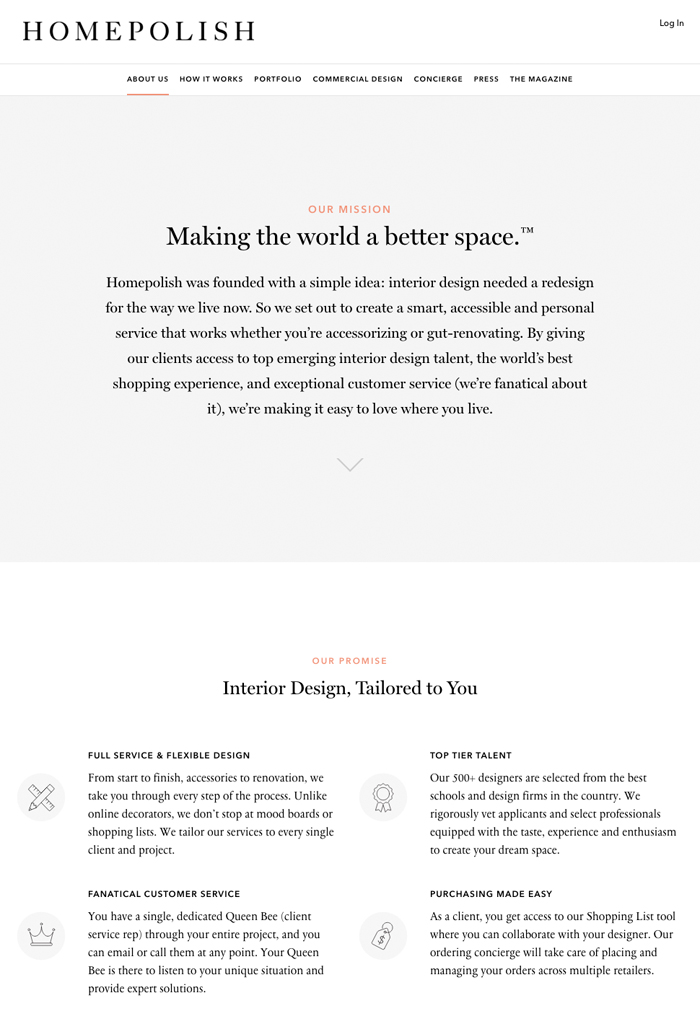
Image via Homepolish
Santos set out on a quest to redefine the established service model in the industry and bridge the gap between these two groups of people. It became his brand mission, and the result was the founding of his company, Homepolish.
2. Circumstances set the scene for the audience in every strong brand story
The circumstances of your brand story are what help set the scene and draw the audience in for the narrative ahead. These are the where, when and how and that give your story context and help the audience relate.
In a series as complex as Game of Thrones, clearly defining these circumstances is essential to avoid confusion among the audience. The Wall is one such example.

Image via Game of Thrones, The Wall – Wikia
On a surface level, it’s a physical place: a tall, foreboding wall of ice. On a secondary level, it also holds layers of meaning: it’s what keeps the White Walkers out of Westeros (well, it was) and it’s where the Night’s Watch do their bidding. All the viewer has to do is see The Wall to recall all the implications that come with it.
The circumstances in your brand story needn’t be nearly as dark and foreboding, but they should help set the scene in a similar way.
Related: Brand Stories: Top 7 Tips for Creating a Great Brand Story
3. Characters build an emotional connection in your brand story
This is one of the most important elements of your brand story: characters. Without them, you’ll be hard pressed to build an emotional connection with your audience (which is what drives brand loyalty and trust).

Image via Game of Thrones, Daenerys – Wikia
The producers and writers behind Game of Thrones do an exceptional job using characters to draw us into the story and get us hooked. Fan favourites like Daenerys Targaryen build our loyalty to the series and keep us coming back to see what happens episode after episode.
Related: From Zero to Hero: How to Become a Must-Have Brand
The professional group of YouTubers known as ‘Yes Theory’ is a perfect example of using likeable characters to build a fan base3. They’re four guys who do crazy things like sneaking into Hollywood parties and jumping out of helicopters.
Innovative? Hardly. Guys have been pulling silly stunts and recording them since the invention of the video camera. But their characters are so likeable—almost always grinning—that the viewer can hardly wait to hit ‘play’ on the next video.
While Yes Theory is an example of using yourself as the central character in your brand story, you can also flip things around and use the customer as the character. In some cases, this can be even more effective.
Kubota Tractor Company pulls this off with flying colours, using the ‘everyman’ of middle America — farmers, growers — to define who they are as a company.
It’s worthwhile to note that it’s not just positive characters that work in a brand story; negative ones can be useful as well. Game of Thrones’ Joffrey Baratheon is one of the ultimate negative characters that helps to drive the plot forward and give the story meaning.
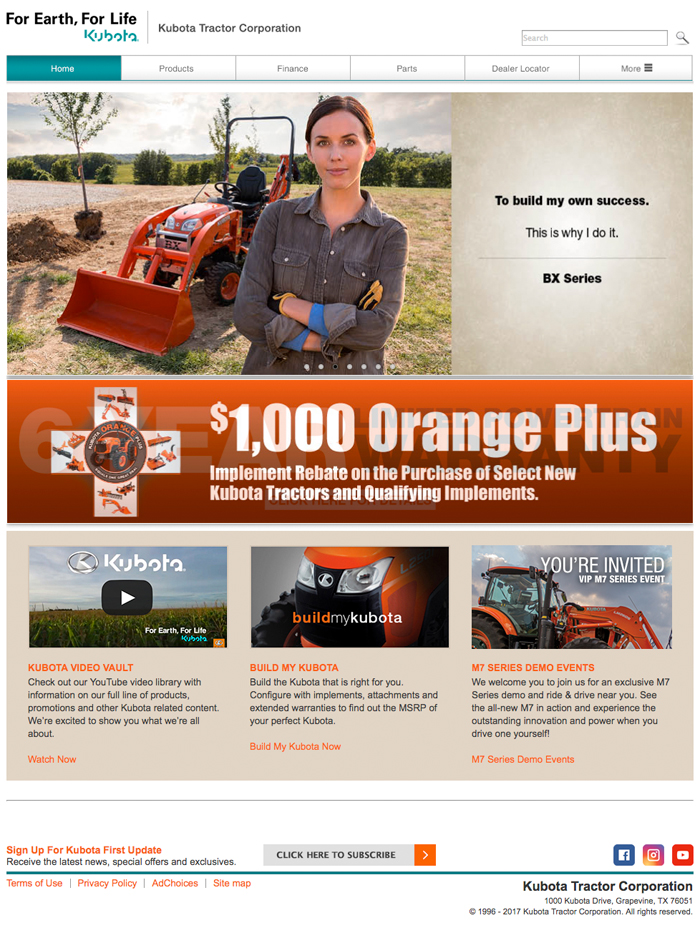
Image via Kubota Tractor
For your brand, the negative character might be an unnecessary middleman or an aggressive competitor. Use your brand story to show how you win out.
Want to know more?
Give us a call T: +353 1 8322724 (GMT 9:00 – 17:00) to find out how we can help you with your brand building and brand story requirements or send us an email to [email protected]
If you’d like to develop and expand your brand story yourself, our brand building programme, the Personality Profile Performer™ provides a very effective step-by-step system empowering you to build your brand and its brand story so you can create a really compelling narrative that enables you to make your brand stand out and attract your ideal customers. Find out more here and watch here how to build your brand yourself.
4. The audience wants to see you overcome struggle in your brand story
If it’s struggle you’re after (and yes, audiences are after it), Game of Thrones has it in spades. The series is chock full of conflicts and unexpected plot twists, which sometimes include the deaths of popular characters.
Humans are drawn to seeing conflict play out; that’s why it’s an important component of your brand story. It may take the form of conflict, fears, failures, uncertainties and frustrations. Maybe you succeeded as a challenger brand. Whatever the case, show the audience how you’ve overcome your struggles.
Related: Personality Matters, Bringing Your Brand to Life to Grow Profits
Erin French is the chef and owner behind The Lost Kitchen, a field-to-table restaurant concept in rural Maine [4]. Each day, she designs the evening’s menu based on what’s available and what’s in season, using only ingredients from local farms and fields. Though popular, her dining room seats just 40 guests.

Image via The Lost Kitchen
As renown for her cooking has grown, so has French’s popularity, which, for many a chef, would mean expanding and outsourcing and meeting the demands of whatever is considered “trendy” at any given moment.
Not for French, though. She’s remained true to her intimate, strictly-local roots despite the pressure to compete and expand. As such, it’s become a defining part of her brand story.
5. Transformational change is a good thing in your brand story
A good brand story isn’t static; it’s constantly shifting and evolving with your brand. Changes, catalysts, growth and revelations keep the audience interested.
In Game of Thrones, almost nothing remains consistent from one season to the next, and that’s one reason viewers keep tuning in. Season 7 brought a huge revelation—the true identity of Jon Snow—which sparked a social media firestorm and built anticipation for season 8.
Related: Use Humour in Branding to Create Strong Emotional Bonds so You Increase Sales
A great real-life example of a transformational change in a brand story is that of High Brew Coffee [5].
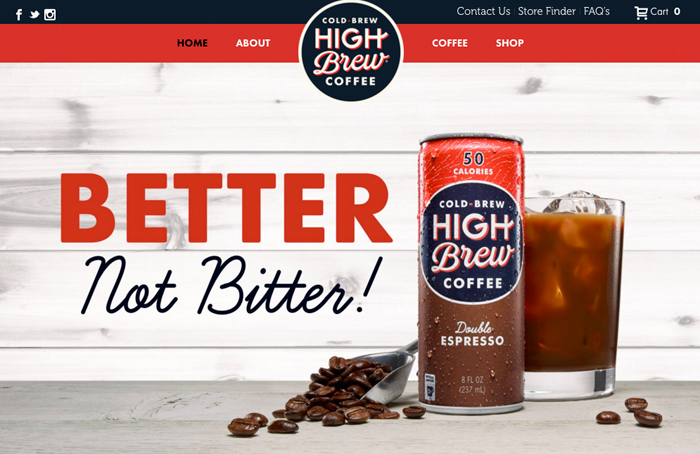
Image via High Brew Coffee
Founder David Smith set out on a voyage not to build a coffee company, but to give his family a once-in-a-lifetime experience rafting through the Caribbean. From navigating unfamiliar waters to learning how to homeschool their children on the six-month trip, Smith and his wife needed something to keep them alert. In the hot Caribbean sun, though, a steaming cup of coffee didn’t exactly hit the spot.
The couple began making their own cold-brew joe on the boat, and the idea for High Brew Coffee was born.
How can your brand convey change? It may be by demonstrating how you’ve grown through the years, how you’ve defied naysayers, how you’ve exceeded expectations or helped facilitate change in the lives of your customers.
6. You must take the audience on a journey in your brand story
Any good story—be it a novel, a television show or brand story—has a clearly defined beginning, middle and end. The struggles we mentioned earlier culminate in a climax and the audience experiences resolution.
In Game of Thrones, each season stands alone as its own mini-journey while playing a larger role in the arc of the series as a whole. The ultimate resolution has yet to be achieved, which, again, is why we’ll keep tuning in.
Amazon Prime has an excellent example of taking the audience on a journey that includes a beginning, middle and end in the space of a single commercial. Watch:
It’s just 30 seconds long, and yet we meet characters (the family, the dog), understand circumstances (the parents just brought home a new baby), witness a struggle (the new baby doesn’t readily embrace the family dog), experience changes (the dad’s Amazon Prime order) and finally, achieve resolution (an adorable one at that).
Of course, there was an all-star marketing team behind this campaign, but it’s a powerful goal to aspire to when crafting your own brand story.
Just as Game of Thrones uses an exceptional story to draw viewers in and keep them hooked (seven seasons and counting!), so can you use your brand story to connect with customers on a deeper level and win fans for life.
Ready to become the number one in your market and stand out head and shoulders above the competition? Our Personality Profile Performer™ e-course enables you to develop a winning brand story that will attract your ideal audience and make your brand instantly recognizable. Find out how here.
Questions to consider:
- What’s the ‘why’ behind your brand?
- What circumstances (where, when and how) are important for your audience to know?
- Who are the central characters in your brand story?
- What key challenges or struggles have been overcome in your brand story?
- How have your characters or you changed since the start of your journey in your story?
- What is your brand’s beginning, middle and end?

Build Your Brand Story Using The Personality Profile Performer™ Programme with Lorraine Carter
Sources:
- http://deadline.com/2017/07/game-of-thrones-ratings-season-7-return-hbo-1202130304/
- https://www.entrepreneur.com/video/290950#
- https://www.shopify.com/blog/how-to-become-a-youtuber-yes-theory
- https://www.forbes.com/sites/karastiles/2017/09/07/field-to-table-mystique-in-rural-maine-how-owner-erin-french-protects-the-lost-kitchen/#6ea379c85bdb
- http://www.huffingtonpost.com/jeff-charles/4-fantastic-examples-of-b_b_9852356.html
Social Responsibility: How to Build a Socially Conscious Brand
/0 Comments/in Brand Strategy, Corporate Social Responsibility /by Lorraine CarterCorporate social responsibility is dead in the traditional sense. Not because no one cares anymore, but because the field has been transformed into something entirely different now.
The TED speaker, Rachel Hutchisson, explains the details of this transformation.
Turns out the focus on corporate is extremely limiting, and CSR is taking a form of community or human social responsibility. But how did this transformation come about?
Well, we no longer rely on organizations to tell us what to do and which standards to follow. We go online, research, read reviews and make informed decisions without getting anyone else involved but our own judgment. Social responsibility turned into a conversation where businesses and customers are equal.
As a result, brands are struggling. If you too don’t know where to go from here, have a look at our Brand Audit service, that will provide a thorough examination of brand’s current position in the market and determine opportunities for improvement, including those in the social responsibility field. A Brand Audit will help enrich your brand with purpose so that it can stand out in the turbulent market.
Related: Purposeful Brands: Why Customers Are Prepared to Pay More
How Corporate Social Responsibility Has Changed
The Internet opened up many opportunities for education and connected people on so many levels. We stopped seeing big businesses as the only entities that can affect social issues. In the world of connectivity, everyone has the power to make an impact.
The engagement with social issues has gone up, so that’s a huge plus. But, this also means that businesses are subjected to critical scrutiny. Now that the people are deeply involved, they expect every business, large or small, to join the conversation in a responsible and sustainable manner.
This rings especially true for the Millennials and Generation Z. Studies show that 80% of millennials [1] expect companies to make a public commitment to good corporate citizenship.
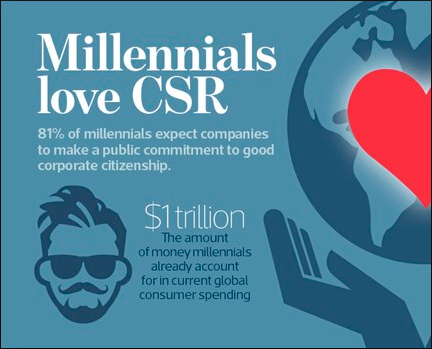
Image via The Chartered Institute of Marketing
What does it all mean for businesses? It is increasingly important for brands not only to be socially responsible but also to choose the right social mission and employ the right marketing tactics.
But don’t get too worried about implications and expenses. There are a plethora of benefits too.
Benefits of Building a Socially Responsible Brand
Of course, every business owner sees social responsibility from a profit-making angle. But watch this video from TED. The speaker, Alex Edmans, claims that businesses can both do good and do well. According to the speaker, social responsibility is not a way to drive profits but a way to do good for society while profits will come naturally.
Here are some other benefits of having a social purpose brand:
- Added benefit when seeking investor funding
When seeking investors, you have to tell a larger brand story. Investors favour ideas with an added twist.
They also understand that it takes more than a great idea to keep the company together. The ability to retain human capital and form mutually beneficial relationships with society are all taken into account.
Related: Brand Stories: 5 Compelling Examples That Sell Themselves
- Competitive advantage
Consumers are socially conscious and are looking for brands that share the same mindset. The faster you are to adopt this mindset the more chances for your brand to be chosen over other brands.
Social responsibility elevates the brand to a new level, leaving all everyone else behind.
- Premium positioning and pricing
Customers don’t mind paying an increased price because subconsciously everyone understands that social responsibility means expenses.
Psychologically it makes people feel good when they contribute to society, so knowing that a brand is socially responsible puts people at ease with a lofty price tag.
- Increased brand loyalty
Even though customers do jump from one brand to another in search for better products, recent research by Facebook[2] confirms that brand loyalty is alive and well.
Related: Brand Loyalty: 5 Key Steps to Building Your Loyal Fan Base
Loyalty is built on emotions, and is there a stronger emotion driver than the future of humanity? Brands that manage to establish a deep connection between their social initiatives and their customer base, enjoy unwavering brand loyalty.
- Stronger corporate culture
To understand a corporate culture in relation to branding check out this video from Sasha Strauss on what brand alignment is and why it’s important for employees to believe in your brand and your company.
It’s a known fact that people find meaning in jobs that focus on craftsmanship, kinship or service[3].
Socially responsible organizations can greatly benefit from this finding, by emphasizing the impact the company makes in their internal communication and thus providing employees with additional, powerful source of inspiration.
Related: The Age Of Internal Branding And Selling It From The Inside Out
Visually all the benefits of social responsibility can be presented by the virtuous circle business model.
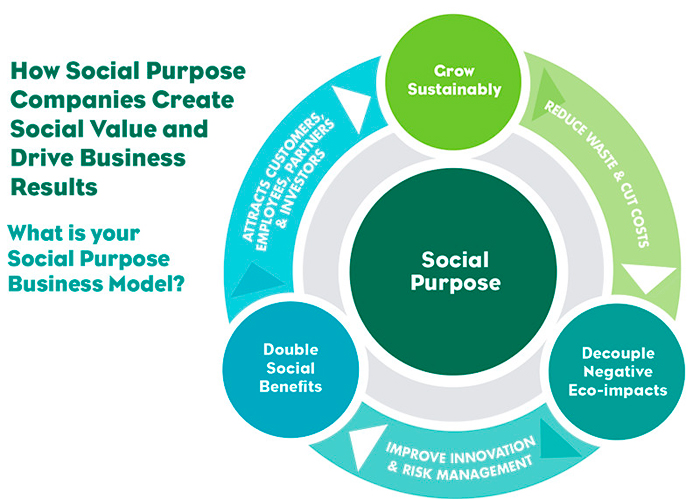
Image via Sustainable Brands
How to Create a Socially Conscious Brand
Before you embark on a mission of building a socially responsible brand, there are certain basics that need to be discussed. In particular, the models of socially responsible brands. These models are fluid concepts rather than strict guidelines.
Related: 4 Reasons Why Your Business Profit Starts With Your Brand Mission
4 Models of Socially Responsible Brands
Model 1. Social purpose as the core of a brand
Patagonia brand always advertised itself as a fair working conditions company with environmentally friendly production processes. Their business model is based on socially conscious practices.
If the brand suddenly decides to move their production to cheaper factories in the far-flung corners of China, it would undermine the very essence of a brand.
This model can be defined as “social purpose is what we do”.
Model 2. Social purpose as legitimacy
Business is an indispensable part of a society. When the business enters the market, it agrees to operate according to social expectations.
The expectations for businesses are pretty much the same as for people – do no harm, abide by the laws and contribute to the community.
Brands that build skate parks, plant tree line alleys in the city parks, create art installations[4] in the city squares follow their social contract.
This model can be defined as “social purpose is how we’re expected to act”.
Model 3. Social purpose as a way to reach business goals
Companies worldwide have incorporated social purpose into their brand narrative to boost sales.
Related: Brand Story: The Key Ingredients to What Makes It Compelling
This model doesn’t have to have a negative connotation. People buy Macbook because it’s the best computer on the market, not because of the company’s commitment to carbon emission program. But the company’s social mission gives people a peace of mind.
This model can be defined as “social purpose is what we do to be successful”.
Model 4. Social purpose as a separate brand narrative
Companies operating in medical, social and education fields don’t have to do much to communicate their commitment to society. These brands have social mission infused in who they are.
This model can be defined as “social purpose is who we are”.
Now, let’s explore the exact process to create a socially responsible brand
Socially Responsible Brand Creation Process
Step 1. Choose the right social need
For businesses that are just starting their social responsibility quest, it helps to explore different ideas and get a bit creative before they land on one or two social causes to support. Usually, these ideas are restricted by the three realms: brand history, customers, and product[5].
To identify your social need first look at all three realms and list every single cause that comes to mind. Then score each cause from the brand, consumer and business perspectives.
The social need that emerges based on this analysis, will, ideally, lie on the convergence of all three realms.
In the brand audit process, we evaluate where and how to develop your brand’s social responsibility strategy and how to seamlessly incorporate it into your brand narrative.
For brands that prefer to do a brand audit internally, our brand audit health check programme, the Auditing Analysis Accelerator™, provides a simple but highly effective framework for identifying brand weaknesses, strength and opportunities so that you can easily create a powerful narrative that attracts the target audience. Find out more here and watch here of how to give your brand a health check yourself.
Step 2. Incorporate social purpose into the brand narrative
It’s important to tie the social purpose with the brand narrative. Without a clear statement of what your company does and why social purpose doesn’t bring any value.
Related: Brand Stories: Critical to Brand Growth Strategy
Here are some ways you can incorporate social purpose into a new or existing brand story:
Buy-one-give-one
A great example of a carefully crafted buy-one-give-one narrative is TOMS brand. For every pair of slippers sold the company donates another pair to a person in need.
This type of brand narrative employs customer engagement to the fullest. People will always need a new pair of slippers and if they can help someone while they shop, they will.
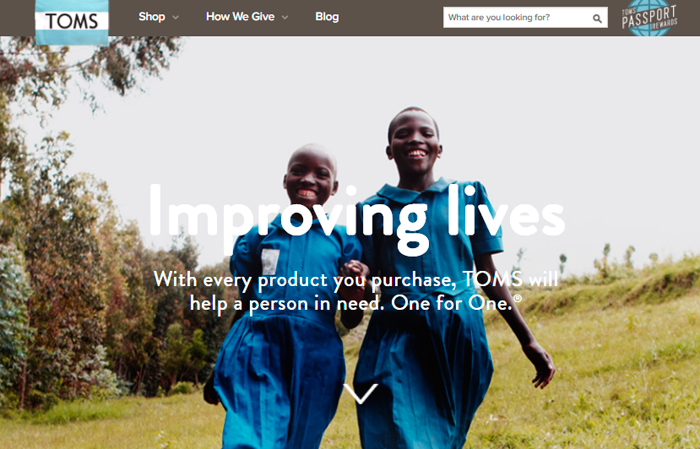
This concept works for smaller brands too. It allows for many interpretations. For example, if you have a product that gets manufactured in the local community, people who buy your product, end up supporting the craftsmen who made it. You don’t have to give out part of the profit to apply a buy-one-give-one narrative. If the product creates jobs, it already has a social connotation.
This is exactly how Pura Vida owners have built their brand narrative. When you buy a bracelet from Pura Vida, an artisan in Guatemala can buy a dinner for his family.
Socially responsible business model
A great example of a small sustainable business is Everlane. The brand initially started as an environmentally friendly brand with transparent manufacturing processes and fair prices.
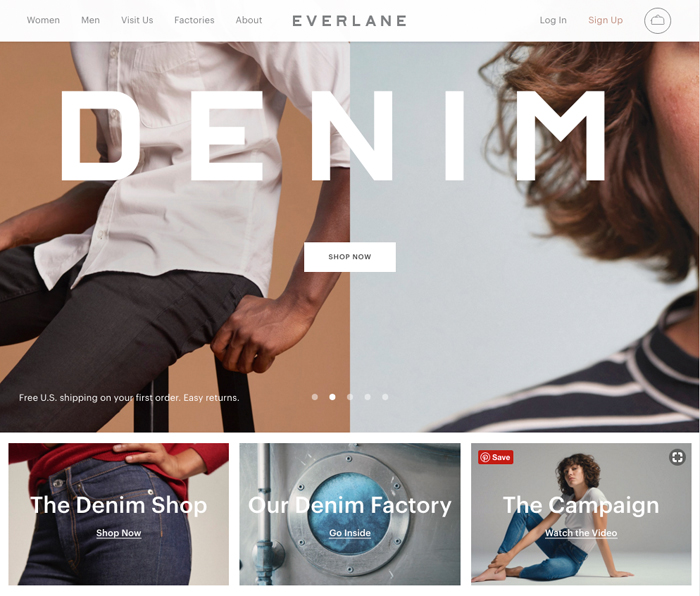
Social sustainability is at the heart of their business, this is what the brand has become known for.
Everlane example shows how to take a social issue that the industry has been talking about for ages and create a business that makes a real impact.
Even though Everlane is a small business and they don’t own thousands of factories to affect the state of the fashion industry, their initiative has started a conversation. And in the age of a social media, conversations spread like a fire.
Changes in the operational model
You might not have a material product that affects the society. But the way you do business impacts others.
Sacramento Event Planners is a small event planning agency, that specializes in the so-called greening events. The company promises the best event ever, but the impact of the event on the environment will be minimal.

Image via Sacramento Event Planners
Analyze your business and the way you conduct operations and see if you can alter some processes to negate the impact. For example, going paperless and saving energy in the office might not be important to your consumers, but when you apply those exact policies in a retail store, the effect is a lot more visible.
Employee volunteerism
When a Walmart employee volunteers for at least 25 hours with a non-for-profit Walmart gives such an organization a $250 grant.
It’s a carefully crafted multi-dimensional program that provides benefits to everyone involved: employees can explore their passions through volunteerism, nonprofit organizations get a financial boost, and Walmart actively advertises its commitment to the community.
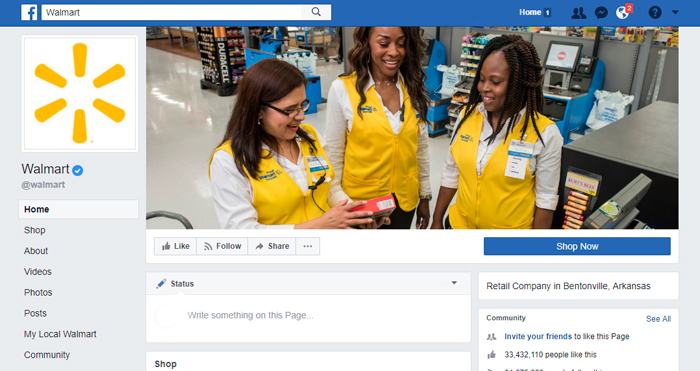
On a smaller scale, giving a day off to employees so that they can plant trees in the nearest park works the same way. Your team members will be grateful for a change of scenery, whilst the community with benefit from the beautiful greenery. Have a branded T-shirts ready and take lots of pictures and your brand will get the recognition it deserves.
Being a social influencer
Last year the Institute of Code ran a contest on social media that encouraged all women and girls to apply for programming scholarship at the Institute. The company is based in Bali and the campaign generated lots of hype online.
The contest immediately associated the brand with a female empowerment movement and proved that even small businesses can use social issues to drive awareness.
Related: Branding for Women: Why Women are Redefining Brands and Branding
Educating on old vs new
Even though Tesla brand doesn’t run active social responsibility campaigns, it continuously educates consumers on the environmental benefits of using a clean source of energy. For example, in 2015 the company owner announced that he would open-source Tesla’s intellectual property so that everyone could follow Tesla’s vision of a clean future.
Tesla doesn’t have to make much effort in social responsibility. After all, the company produces the cleanest car on the planet. But business owners who are trying to improve on the old, no matter if it’s a slight improvement or a dramatic overturn, can employ similar tactics to inform and educate their consumers.
Offset business’s negative impact:
For an airline, carbon emission and fuel efficiency are the main concerns. Virgin Atlantic invests in a modern fleet, educates its captains on ways to improve fuel efficiency and offers customers an option to offset their carbon.
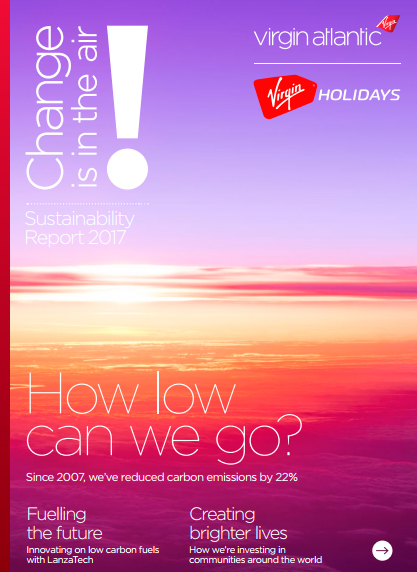
Image via Virgin Atlantic
Everyone is somehow affecting the world around us, be it the environment or people: we drive cars and transport goods, wash the dishes and produce lots of waste.
As a small business owner, you can choose the cause your business affects most and devise a way to make the impact less severe.
For example, for delivery businesses, the effect of transportation on the environment can be huge but put a little more thought to route planning and you’ll save the planet a couple of years.
Step 3. Show the proof to the audience
There is no use in social purpose if you don’t communicate it. Even communication might not be enough.
While the older generation might accept social responsibility message as a stated fact, Millennials and Generation Z expect brands to show the proof and deep knowledge[6] about the issues.
People will only reward brands who manage to show full transparency and authenticity.
Here are some ways you can show the proof:
- Online marketing
- Events around the issue
- Social Media campaigns
- Employee advocacy
- Updating the news section on the website
Standing Out In The Crowded Social Space
As we move towards a fully connected world, more companies will be adopting a social mission, making it less of a competitive advantage and more of the must-have element of branding.
However, experts agree that social responsibility is here to stay. It might be getting more conversational, we might expect more engagement and actual real impact from brands, but we still view socially responsible brands more favourably. And the first key to building a socially conscious company is a sound and clear brand strategy.
If you’d like to make social responsibility an integral part of your brand and how you do business then a brand audit, with that objective in mind, will help you evaluate where and how to develop your brand’s social responsibility strategy from the very start. A professional brand audit helps identify areas of weakness, strength and potential opportunities for innovation.
You can give your brand a health check yourself using our brand audit health check programme, the Auditing Analysis Accelerator™. Find out more here and watch here of how to give your brand a health check yourself.

Audit your brand now so you can identify where and how to make social responsibility part of your brand ethos
Want to find out more?
Alternatively, if you’d like professional input and direction for building your brand and would like to leverage our experience and expertise then send us an email to [email protected] or give us a ring T: +353 1 8322724 (GMT hours 9:00 – 17:00). We’d be very happy to speak with you.
Questions to consider
- Would you pay a premium price for a socially conscious brand?
- What social causes feel natural for your business?
- Can you tie in your brand purpose with a social mission?
- What are the ways to incorporate a social purpose in business? Can you see how any one of these applies to you?
[1] https://www.forbes.com/sites/larissafaw/2014/05/22/millennials-expect-more-than-good-products-services-to-win-their-loyalty/
[2] https://www.facebook.com/iq/articles/modern-loyalty-love-in-a-time-of-infinite-choice?ref=wpinsights_rd
[3] http://www.apa.org/monitor/2013/12/job-satisfaction.aspx
[4] https://www.theatlantic.com/business/archive/2017/03/fearless-girl-wall-street/519393/
[5] https://hbr.org/2017/09/competing-on-social-purpose#comment-section
[6] http://www.millennialmarketing.com/2017/01/show-me-says-gen-z-pivotals-want-proof/
Purposeful Brands: Why Customers Are Prepared to Pay More
/0 Comments/in Brand Mission, Brand Profiling & Positioning, Brand Purpose, Brand Strategy, Brand Values, Branding /by Lorraine CarterA quick answer please, if you can, to this question: “What does your brand really stand for?” in other words “What’s your brand purpose?”
If you hesitate to succinctly define the mission, vision, and values behind your brand – the primary raison d’être for your brand’s existence — your brand purpose — you can be certain that customers and potential new customers are missing the point entirely too. This is why it’s critical to codify and map out your brand so you are highly visible, stand out, can clearly articulate your brand purpose and deliver an unforgettably great customer experience.
In other words, if customers can’t meaningfully differentiate your brand from your competitors they will default to decisions based on price alone and they won’t pay a premium.
Because…when brands give, brands get.
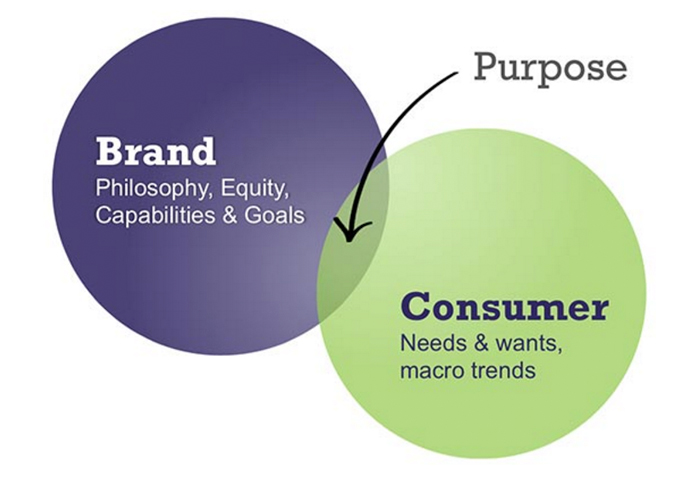
Image via Harbinger Communications
Who Decides and Defines: What is Brand Purpose
Mind you, it’s not as easy as it sounds. In 2014, according to The World Federation of Advertisers, consumers and marketers can be confused by the meaning and focus of brand purpose.[1]
“There is consensus that brand purpose is increasingly relevant,
but people and marketers don’t seem to agree on what it means.
Marketers see it as the bigger picture,
but people see it as what you do in daily life.” –
Stephan Loerke, managing director of the WFA
Where it Matters Most: Brand Purpose
Around the globe, consumers value brand purpose to varying degrees. Responses to whether consumers are willing to pay a premium for a product that supports good causes find Chinese with a very different view than Britons.[2] Nevertheless, this survey result means that even at the low end of the scale, more than one in four would loosen their purse strings for a brand with purpose.
| China | 80% |
| India | 70% |
| Brazil | 55% |
| Malaysia | 55% |
| USA | 39% |
| UK | 28% |
The concept of brand purpose is sometimes overlooked, or not clearly communicated, by small to medium-sized business owners and managers largely because the serious impact it has on accelerated business growth is not fully understood. Brand purpose can get lost in the frenetic pace of a busy startup. So it’s really important to underscore the huge influence brand purpose has on business outcomes, re-define the concept, and demonstrate its influence in commercial terms as the major driver behind perceived value, premium price points and higher sales.
Related: 10 Branding Tips From Silicon Valley on How to Be a Successful Startup Brand
Why Brand Purpose Matters
What do consumers think: Edelman’s brandshare studies[1] reveal that 92 percent of 11,000 consumers surveyed in eight countries want brands to share their values more effectively. Overall, 40 percent don’t think brands are doing enough to communicate and demonstrate purpose in “helping the world” in some way.
Related: Brand CSR: The Business Case for Successful Branding and Social Good
What do executives think: In a study issued by EY Beacon Institute and Harvard Business Review[2], 85 percent of the 474 business executives surveyed indicated they strongly agree they’re more likely to recommend a company with a strong purpose. They also strongly agreed, at 80 percent, that a company with shared purpose will have greater customer loyalty.
Related: CEO Brand Leadership: How Vision Drives Brand Growth
See the results in two diagrams: Brands that prioritize brand purpose benefit from stronger growth.[3]
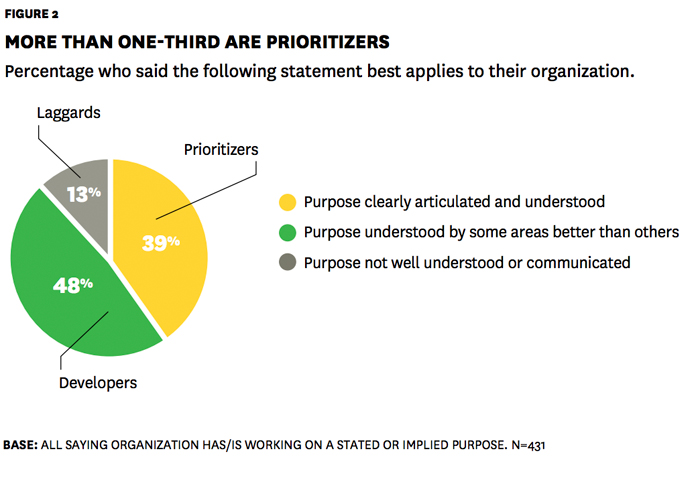
Image via Harvard Business Review
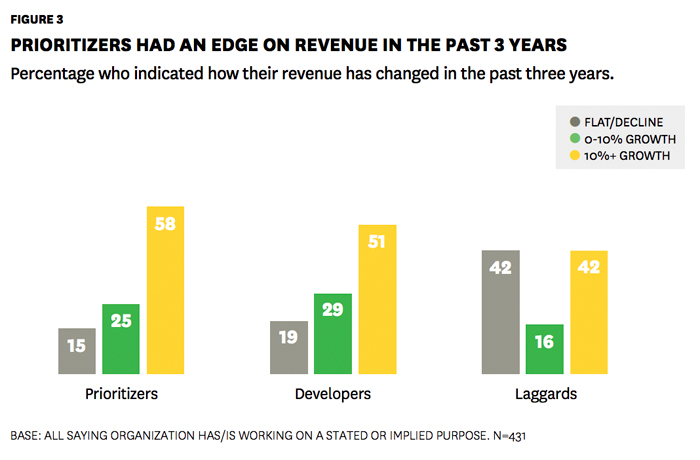
Image via Harvard Business Review
Defining Brand Purpose
What does this all mean? Brands with clarity of purpose outperform brands who lack it. To survive, brands must live and breathe through their core values because these are the fundamentals differentiating a brand from all its competitors so it stands head and shoulders above all the rest — and consequently commands a premium.
Author Simon Sinek sums the lessons from his book, “Start With Why” in his famous TED Talk about communicating brand purpose.
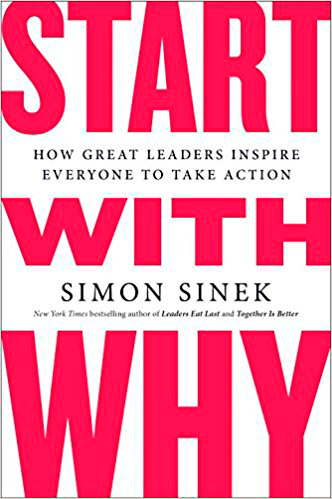
“People don’t buy what you do. They buy why you do it.”
– Simon Sinek
Sinek goes on to say, “The goal is not to do business with everybody who needs what you have; the goal is to do business with people who believe what you believe.”
Brand Purpose and Customers
The underlying message is that emotion drives purchase. Brands can engage primary customer emotions through articulating what the brand stands for, that is, purpose equals its mission, vision, and values.
The brand must reinforce this and bring it to life via experiential terms, such as customer service and brand touchpoints.
Related: Top 10 Brands for Customer Experience and What You Can Learn From Them
Be Different, Be Transparent Through Brand Purpose
Brand purpose is also a primary factor in brand differentiation because when it is sufficiently strong and compelling, it makes a brand highly visible and different compared to every competitor.
Simplistically speaking, if a brand’s purpose is aligned with the values of its ideal primary audience, those customers will naturally be attracted to it and want to buy it. People reward brands that openly share their values when those values are transparent. “Do we believe in the same things?” is what a customer wants to know. However, it is not the customer’s job to dig deep for that answer.
If brands don’t stand up for what they stand for — and diligently communicate it — nobody knows what the brand purpose is all about.
Brands with a purpose command the customer’s attention because, price point aside, a meaningful, emotional connection is valuable to the purchaser.
Related: Personality Matters: Bringing Your Brand to Life to Grow Profits
Whether a giant corporation or small business owner, it is critical to identify your brand purpose. Are you entrepreneurial? Find out what you truly stand for as an entrepreneur. Determine how to embody this purpose and communicate it to everyone your brand interacts with, including employees. You will enjoy higher profits while making your lasting mark on the world.
Related: The Age Of Internal Branding And Selling It From The Inside Out
If you want direction and support empowering you to transform your brand so you stand out with a strong brand purpose and increase your sales then the Persona Brand Building Blueprint™ Mastermind is the perfect fit for you.
This is a two-day brand building intensive shared with a small group of like-minded peers where you work on your brand with our leadership. In fact, over the two days, you reevaluate your brand, codify it and create your brand purpose and strategy to stand out and attract your ideal customers whether you’re revitalizing an existing brand or creating a new one.
At the end of the two-day Persona Brand Building Blueprint™ Mastermind you leave with absolute clarity on your brand purpose and your fully documented brand strategy ready for implementation in your business or organization.
This is not a theory based programme but a highly interactive fast-track programme where you work intensively on your brand throughout the two days duration, under our tutelage, using our ten step system to:
- Completely re-evaluate your brand to make it much stronger so it’s highly visible enabling you to increase your profits
- Map out your brand in full so it’s codified and comprehensively documented to grow your business faster
- You leave with your total brand road map or GPS of your brand empowering you to manage your brand, stand out and attract your ideal customers so you multiply your sales
Outcome: Your brand transformed so you can increase sales.
If your team is larger and you’d like to include everyone’s’ participation in the Persona Brand Building Blueprint™ Mastermind then we also run in-house private client brand building intensives tailored to your bespoke requirements so you’re empowered to take your business further a lot faster.
Want to know more?
Give us a call T: +353 1 8322724 (GMT 9:00 – 17:00) to find out more and discuss your preferences or send us an email to [email protected]

Codify and build your highly visible, profitable brand at the Persona Brand Building Blueprint™ Mastermind with Lorraine Carter
Examples of Explicit Brand Purpose
Dove and Levi Strauss are two brands that articulate brand purpose extremely well, fueling the emotional factors that drive purchase decisions.
Here we delve into these two examples of successful brands whose achievements and prosperity are largely underpinned by very compelling brand purpose. While these are not small business examples, there are reasons tied to brand purpose that explain how these companies grew larger and more profitable because of their strong brand purpose.
Related: 4 Reasons Why Your Business Profit Starts With Your Brand Mission
Brand Purpose Example: Dove Beauty Bar
It’s been over a decade since Unilever launched the groundbreaking “Campaign for Real Beauty” for Dove.
Brand Purpose: “To educate and inspire girls and women to embrace a wider definition of beauty.”[4]
Dove Real Beauty
“You’re more beautiful than you think,” was one early example. Following 19 million views on YouTube alone, its purpose of making women feel better about themselves launched the Dove Self-Esteem Project.
Result: “Since the inception of the Campaign for Real Beauty we have seen a significant positive shift in brand perception…Dove is seen both as a leader in the personal care company, as well as a leader in the Real Beauty conversation.”
Dove has achieved a return on investment that cannot be measured solely in uplift in the sale of bars of soap, although that’s occurred as well. Just ask one of their 27 million followers on Facebook.
In 10 years, the campaign, which Ad Age tapped as the best of the 21st century, has reportedly helped boost Dove sales from $2.5 billion to $4 billion, says the publication.
Dove Says:
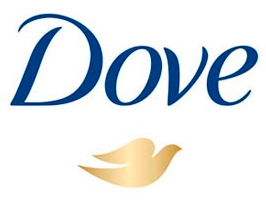
Image via Dove
“…11 years since we launched the Dove Self-Esteem Project, more than 625,000 teachers have delivered a Dove self-esteem workshop and more than 1.5 million parents have engaged with our online content. We’ve already helped 19.4 million young people in 138 countries. But we won’t stop there. Our global mission is to reach 20 million more by 2020.”
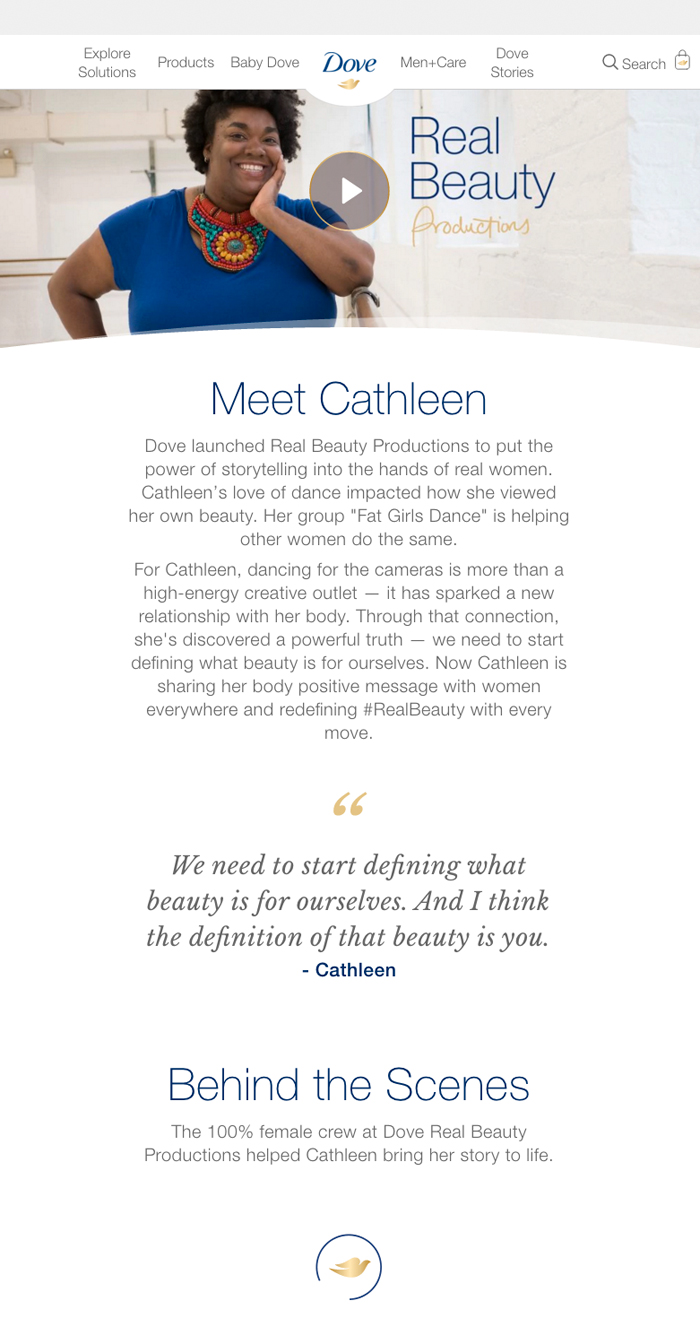
Image via Dove
What’s Next: Dove Real Beauty Productions launched in 2017 to bring touching real stories from real women to life in mini-videos. Meet Kylee, Meet Cathleen, and so on present revealing self-portraits, bravely challenging narrow definitions of “real beauty.”
How Much: At 6 bars of soap for $6.88, Dove Beauty Bar isn’t a costly item. But, $4 billion is a lot of soap. Clearly, women drawn in by the self-esteem campaign haven’t been concerned about getting another brand of soap for a few cents less.
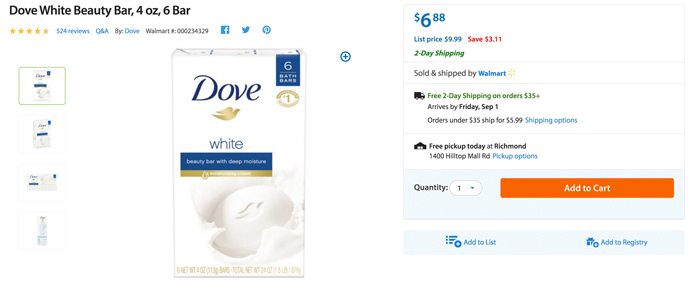
Image via Walmart
Brand Purpose Example: Levi’s
In the mid-20th century, former CEO Walter Haas articulated Levi’s brand purpose: “Each of us has a capacity to make business not only a source of economic wealth but also a force for social and economic justice.”
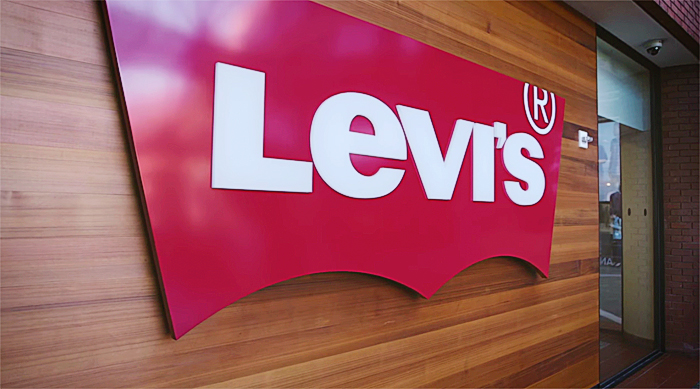
Image via Levi Strauss & Co.
Levi’s History: A brand’s history is “secretly seductive,” suggests Edelman. It can help to define purpose, as in why was the brand born in the first place? In the case of Levi’s, that answer is embedded in immigration, the nation’s westward expansion, family business, the determination and grit of its early nation builders, coupled with the boom of California Gold Rush days.
Related: Family Business Branding and The Secret Drivers to Brand Success
Manufacturing the world’s first blue jeans in 1873, Levi Strauss had an instant hit, creating durable, tough pants that miners needed to withstand the wear and tear of the job. Brass rivets were added to the pockets.
Giving Back: Due to the early success of the company, a commitment to giving back to the community began in the mid-19th century with support for an orphanage. Three decades later, the 1906 San Francisco earthquake and fire destroyed Levi’s headquarters and two factories along with 80 percent of the city. The company responded by extending credit to its wholesale customers so they could get back on their feet and back in business.
Related: Brand CSR: The Business Case for Successful Branding and Social Good
The Levi Strauss Foundation

The Levi Strauss Foundation started with a 1897 donation to the University of California. From worker’s rights to environmental sustainability, the foundation continues its San Francisco Bay Area local commitments while making positive, major worldwide impact.
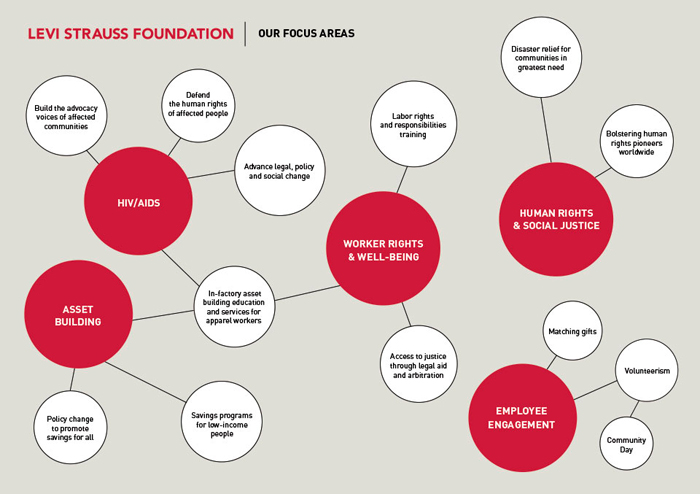
Image via Levi Strauss Foundation
Levi Strauss & Co. Says: Giving back never goes out of style. “We’re well-known for doing things that are right, that may be difficult…” says Tracey Panek, the company historian.
Levi’s Core Values endure and help shape the brand culture in a positive way.
- Empathy — walking in other people’s shoes
- Originality — being authentic and innovative
- Integrity — doing the right thing
- Courage — standing up for what we believe
Related: The Impact of Company Brand Culture On Driving Performance and Increasing Sales

La Cocina is a commercial kitchen incubator for low-income women in San Francisco. It gives them “access to financial, marketing and business opportunities that will allow them to transform their passion into full-fledged livelihoods for them and their families,” explains Levi Strauss Foundation, which supports the cause.
Articulating Brand Purpose: In 1990, the Harvard Business Review interviewed Robert D. Haas, then Chairman and CEO, the great-great-grandnephew of the company founder whose uncle, father, and grandfather all led the company before him.
At that time, he explained what the company had learned from its century-long tradition for social responsibility and how that reputation is inextricably linked to Levi’s success.
“In the past, however, that tradition was viewed as something separate from how we ran the business. We always talked about the “hard stuff” and the “soft stuff.” The soft stuff was the company’s commitment to our work force. And the hard stuff was what really mattered: getting pants out the door.
What we’ve learned is that the soft stuff and the hard stuff are becoming increasingly intertwined. A company’s values—what it stands for, what its people believe in—are crucial to its competitive success. Indeed, values drive the business.”
– Robert D. Haas
In the ongoing story of “Who We Are,” Levi Strauss shares its message about “not just in what we do, but how we do it.”
How Much: Nobody ever said Levi’s 501 are the least expensive jeans. An average pair of purchased in San Francisco in mid-2017 is $67. You can certainly get jeans for less.
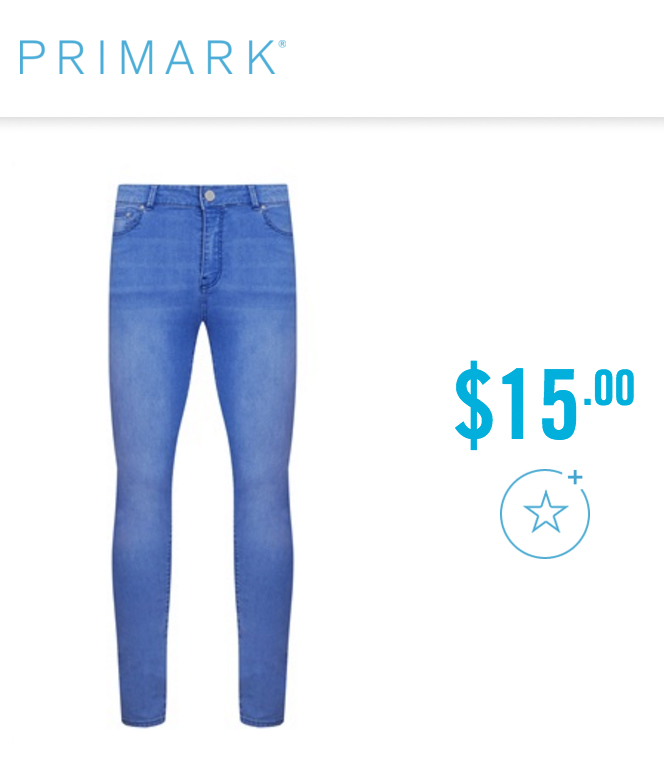
Image via Walmart
Financial Results: Levi’s financial results have been extraordinary over its 160 year lifetime. The 2016 Annual Report indicates that net revenue was $4.6 billion, representing 3 percent growth worldwide over the previous year.

Image via Levi Strauss and Co.
How to Build Your Brand’s Purpose
When working with our private clients we use the Personality Profile Performer™ System to develop key brand foundational elements for their brands. The outputs from the Personality Profile Performer™ then provide you with your brand blueprint or brand roadmap, together with the brand direction for your brand design application in brand collateral, brand communications strategy, training and so forth.
If you want direction developing your brand so you can increase your profits then take a look at our online brand building eprogramme called the Personality Profile Performer™. This online course takes you through all the key steps you need to implement as you build your brand, including your brand purpose. You can watch a free course preview here.
Notice that purpose is one of the key building blocks for a strong brand foundation. This part of the brand foundation provides the critical direction for brand strategy, and consequently, for high performance with the laser-focused results marketers seek. Here we aim to show you how a well-defined brand purpose is inextricably tied to stronger brand performance that commands a higher price point.
Alternatively, if you’d like professional direction to develop your brand purpose and would like to explore working with us then send us an email to [email protected] or give us a ring T: +353 1 8322724 (GMT hour 9:00 – 17:00). We’d very happy to speak with you.
Related: Brand Profiling – How Brand Performance and Purpose Are Inextricably Linked
Questions to Ask Yourself:
- Would you pay a premium for these brands? Can you see why people do?
- Is your brand purpose well defined and well articulated?
- Can your customers express your brand purpose? Can your employees?
- Does your brand purpose reflect authenticity?
- How does your brand demonstrate its brand purpose across multiple customer touchpoints?
- Is your brand focused on creating purpose that commands your customers’ attention and discretionary spend?
[1] https://www.edelman.com/insights/intellectual-property/brandshare/about-brandshare
[2] http://www.ey.com/Publication/vwLUAssets/ey-the-business-case-for-purpose/$FILE/ey-the-business-case-for-purpose.pdf
[3] Ibid.
[4] https://www.facebook.com/pg/DoveUS/about/?ref=page_internal
[1] http://adage.com/article/global-news/marketers-confused-meaning-focus-brand-purpose/292325
[2] Ibid.
4 Reasons Why Your Business Profit Starts With Your Brand Mission
/0 Comments/in Brand Culture, Brand Mission, Brand Profiling & Positioning, Brand Strategy, Branding /by Lorraine CarterIn just about any niche, competition is fierce. Yet many SME, SMB, mid-size to large companies neglect to develop and articulate their brand mission because they’re either not sure how to do it or don’t realise it’s importance.
This in effect means they have nothing of substance [beyond price fights] to attract their ideal customers, whether their audience is B2B or B2C. Your brand mission is one of the critical deciders in captivating your ideal customers so they don’t go to, or buy from your competitors.
When you’re clear on your company’s brand mission, it acts as the overall steering mechanism of the business.
The best companies in the world understand the value of brand mission. It is your brand mission that impacts key decision making, strategic planning, productivity, service and brand strategy and marketing direction.
The real secret of incorporating your brand mission though, is that it drives profit growth because your brand mission and everything that follows it is what attracts the right people – employees and customers; those who believe what you believe. And when you tap into what’s important to the right people, you make considerably more money.
Related: 6 Tips For Building Your Profit Growth Plan
What Does Brand Mission Mean?
Branding is all about human psychology and perception. It consists of different levels, like the brand vision which drives the other elements, including the mission. Brand mission answers the question of, “how do we achieve our brand vision?” It is the “who we are and what we do” of a company.
Let’s get one thing clear from the start though, your brand mission is not a dusty mission statement hanging on the corporate wall. Rather, it’s how the company carries out its mission.
The biggest benefits of developing a clear, strong brand mission are:
- Recognition. Even if your business slots into the small to medium sized, having consistent messaging, tone-of-voice, language, personality, look and feel makes it much easier to attract and remain front-of-mind in your ideal target customer.
- Professionalism. Branding your business makes you appear better, larger and more successful. It makes you more trustworthy, and trust is what makes people ultimately decide to buy.
- Purpose. The brand mission unites employees in one single purpose and makes the business stronger and more effective. When the employees of a company or organisation have a compelling purpose, a reason for being part of something bigger than themselves, then the drivers behind what they do are far more compelling and effective than mere economics alone. These emotional factors are far more potent because they’re the driver behind why people commit to buying something more expensive, working after hours when needed, going the extra mile and so forth. People need to feel that the work they do matters and is part of something bigger — a brand mission is the rallying call for this.
Related: The Age of Internal Branding and Selling From The Inside Out
In the video below, Simon Sinek talks about the psychology of employee fulfillment. A brand mission unites the humans in your company and gives them a sense of common purpose, which ultimately leads to higher productivity and superior quality work.
This is a vital point because much of the monetary benefits derived from a strong brand mission are the consequence of how employees respond when they share a greater sense of purpose.
What Makes A Strong Brand Mission?
A strong brand mission must;
- Be really clear
- Easy to understand
- Represent a higher truth
- Create a lasting impact in the world
- Have meaning beyond the money
Developing a brand mission is about pulling together your company’s vision, strategy, future product and service development, together with its operational and marketing priorities.
By using strategic thought, creativity, expression, and innovation, it combines:
- The company mission
- The customer mission
- The business mission
Essentially, your brand mission is your framework for action, your raison d’être behind the what, why and how for everything you do — the drivers for not only you and your internal team but for the reasons why your customers choose you over your competitors.
Related: Family Business Branding And The Secret Drivers to Brand Success
How Your Brand Mission Drives Profits
1. Brand Mission Underpins Your Company Performance
Raj Sisojdia, a Babson professor, studied 28 companies between 1996 and 2011. His conclusion was that purpose-driven enterprises grew by a whopping 1647% compared to the S&P 500 average of 157%.[1]
Many of the best companies in the world are a result of high employee engagement, which is based on purpose. And purpose, more than money, motivates people to arrive at work every day so that they can make a difference.
The very sad fact is that the majority of employees don’t even know the brand purpose of the companies they work for.[2]
Traveling Vineyard on the other hand, a direct wine sales small business, increased customer acquisition by clarifying their purpose and brand mission.[3]
They changed their focus from “wine sales” to “sharing the love of good wine with the world”.
Related: Personality Matters: Bringing Your Brand to Life to Grow Profits
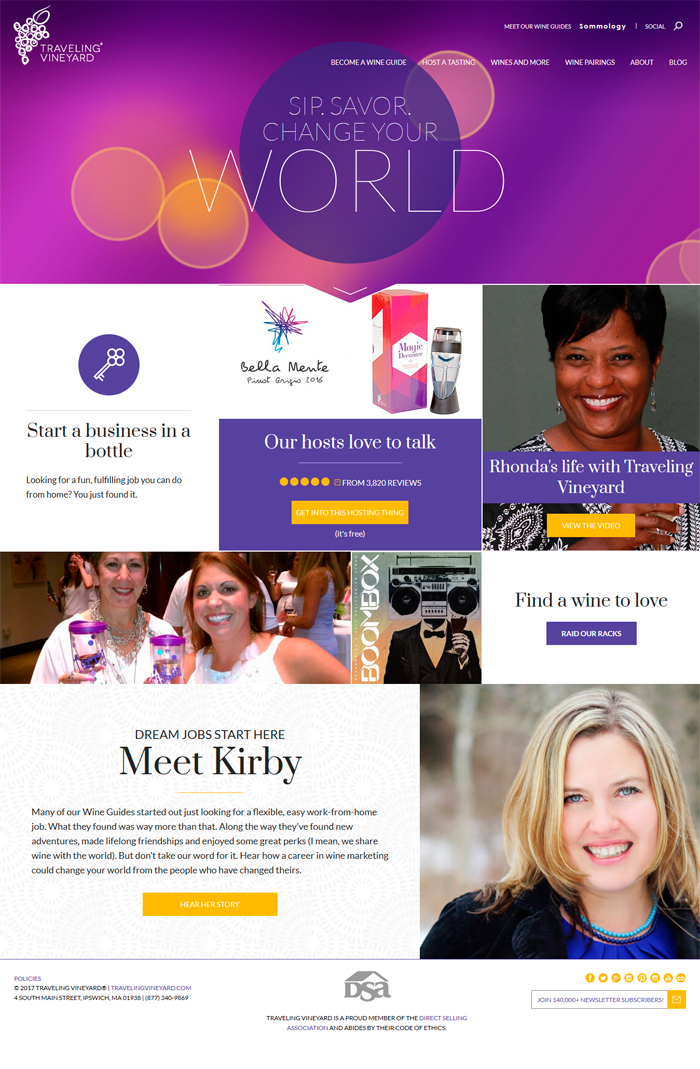
Image via Traveling Vineyard
The Traveling Vineyard lives out their brand mission in everything they do and is expressed through the language and messaging on their website. This critical change in focus in their brand mission is what delivered a dramatic increase in people becoming Wine Guides; resulting in an increase in wine sales.
Their revamped strategy became about getting people to become Wine Guides (ultimately sales reps) who share wine experiences in a relaxed home environment. Instead of focusing on getting people to sell their wines, they changed their internal culture to be one that would transform lives by providing fulfilling, fun and flexible work.
In this way, they were able to bring their customers and employees together with a more meaningful purpose. Changing their internal brand mission resulted in a 49% increase in conversion rates for Wine Guides in the first year, and 83% lead forms submission on web pages that expressed the company’s purpose.
Related: Brand Profiling: How Brand Performance and Purpose Are Inextricably Linked
2. Brand Mission Attracts The Right People
One of the greatest reasons for incorporating a brand mission, is that it helps attract the right people, for the right reasons. Who are the right people? Those that will ultimately buy from you. And of course, it’s essential to draw the right employees to your company; those that are the right “fit” for your company’s culture, and those who will add the most value to your vision.
Your brand mission aligns the internal (staff) and the external (customers).
The Airbnb Story: How Three Ordinary Guys Disrupted an Industry, Made Billions … and Created Plenty of Controversy, by Leigh Gallagher, tells of how a young brand developed into a household name because of its brand mission.
Essentially, Airbnb is a tourist booking facility, but what separates it from it’s competitors is that the focus is on making memories and creating experiences. It is this mission and message which has been and continues to be one of the key drivers behind their success.
In mid-2014, Airbnb developed a new mission — to make people around the world feel like they could “belong anywhere.”
The founders wanted Airbnb to stand for something much bigger than travel; it would stand for community and relationships and using technology for the purpose of bringing people together.
Related: The Impact of Company Brand Culture On Driving Performance and Increasing Sales
Check out the story[4] about Airbnb’s massive growth, and how their brand mission catapulted it:
Although now a household name in many parts of the world, Airbnb started as most businesses start – small. Now that they’re a well known brand name, you may be thinking their branding story may not be applicable to you.
Related: Brand Stories: 5 Compelling Examples That Sell Themselves
Even if you’re flying solo – you may be a freelance writer, business consultant, coach, author, IT consultant, or building a multi-level marketing business – you should still have a brand mission to differentiate yourself from your competitors.
Do a Google search with your niche keyword and you’ll see just how many online competitors you have, so you need to develop and use your brand mission as part of your strategy for standing out and getting attention from the people who need your service or product. As a solopreneur, it’s especially important to discover your uniqueness and leverage your personal brand identity. Otherwise, you’re just another anchovy fish lost in the ocean.
If you want direction and support empowering you to transform your brand so you stand out and increase your sales then the Persona Brand Building Blueprint™ Mastermind is the perfect fit for you.
This is a two-day brand building intensive shared with a small group of like-minded peers where you work on your brand with our leadership. In fact, over the two days, you re-evaluate your brand, codify it and create your brand strategy to stand out and attract your ideal customers from the ground up whether you’re revitalizing an existing brand or creating a new one.
This is not a theory based programme but a highly interactive fast-track course where you work intensively on your brand throughout the programme duration, under our tutelage, using our ten step system to:
- Completely re-evaluate your brand to make it much stronger so it’s highly visible enabling you to increase your profits
- Map out your brand in full so it’s codified and comprehensively documented to grow your business faster
- You leave with your total brand road map or GPS of your brand empowering you to manage your brand, stand out and attract your ideal customers so you multiply your sales
Outcome: Your brand transformed so you increase your sales.
At the end of the two-day Persona Brand Building Blueprint™ Mastermind, you leave with your fully documented brand strategy ready for implementation in your business or organisation.
If your team is larger and you’d like to include everyones’ participation in the Persona Brand Building Blueprint™ Mastermind then we also run in-house private client brand building intensives tailored to your bespoke requirements so you’re empowered to take your business further a lot faster.
Ring us today and discover how to build your winning brand to make it really stand out and increase your sales
Want to know more? Give us a ring T: +353 1 8322724 (GMT hours 9:00 – 17:00) to discuss your preferences or send us an email to [email protected]
Regardless of the size of your business, you need to know who you are, what you stand for and what you can offer your audience because the service or products you promote are not what you are really selling.
Remember, 60% of branding is about perception and only 40% is about your product or service so you must touch the heart first if you want to move the mind.
Once you understand that and begin marketing with that concept front of mind, that’s when you’ll really start generating serious revenue.
Just like a brand mission for conglomerates, a personal brand is a combination of your strengths, passions, gifts, and the purpose that you bring. In the next video by TEDx Talks, Anand Pillai provides a formula for building a personal brand, remembering that your mission is what drives your business, solo or major conglomerate:
Related: Personal Branding: We Are All CEOs (Part 1)
Smaller B2B companies can stand out from the crowd simply by providing brilliant content on their website, as the Buffer App does on their blog. A simple branding strategy for smaller businesses, Buffer is creating a cult following by publishing content that is irresistible and central to their brand mission.
Buffer’s brand mission[5] is to “create helpful, actionable content that helps people with their social media presence. To connect a community of like-minded people with passions for social media, self-improvement, and Buffer’s values. To share Buffer’s internal approach, philosophies, and culture to help create a new way to work”.
Their mission drives their brand strategy and consequently all marketing activities.
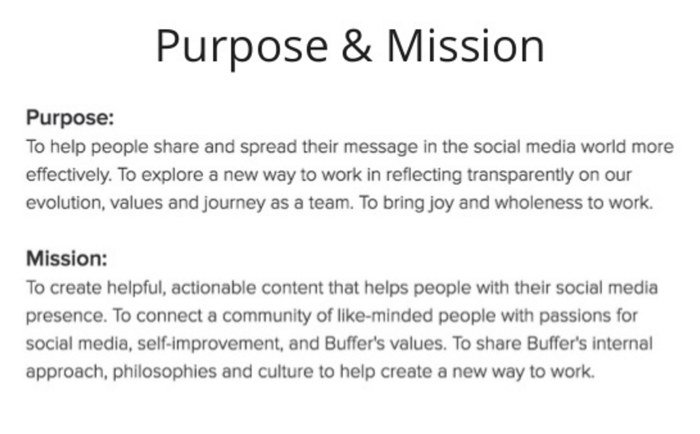
Image via Buffer Slideshare
Buffer was only founded in 2010. In 2016, their staff complement doubled from the previous year. They now boast 75 employees who work remotely around the world.
Their success is further evidenced by the results achieved with their content: one of their posts[6] has been shared 23 000[7] times and earned 210 000 likes on Facebook. Not bad for a humble team of 75…
By addressing target audience problems via blogging, and becoming known for publishing genuine value-add content, they get the attention of the people they’re targeting.
Related: Personal Branding: We Are All CEOs (Part 2)
3. Brand Mission Creates Consistency
Have you ever experienced exceptional service from a company, and the next time, expecting the same level of service, were deeply disappointed?
That’s because the brand lacks consistency. In fact, consistency engenders trust so if your brand falls short in any areas of the business or at any brand touch point, be it your brand collateral, customer facing staff, service or product delivery you undermine the power of your brand. Consequently, your sales and profitability are also immediately compromised because inconsistencies plant seeds of doubt and create bad customer experiences. Companies who boast consistent good customer experience are those who put standards in place to carry out their brand mission consistently in everything they do.
Brand awareness also depends on consistency. In fact, every aspect of managing, protecting, directing and preventing unintentional brand sabotage requires branding style guides.
Related: Brand CSR: The Business Case for Successful Branding and Social Good
If you want direction developing your brand so you can increase your profits then take a look at our online brand building eprogramme called the Personality Profile Performer™. This online course takes you through all the key steps you need to implement as you build your brand, including your brand mission. You can watch a free course preview here.

Build Your Brand Mission Using The Personality Profile Performer™ Programme with Lorraine Carter Here
If you’d like professional direction to develop your brand mission and would like to explore working with us then send us an email to [email protected] or give us a ring T: +353 1 8322724 (GMT hour 9:00 – 17:00). We’d be delighted to talk with you.
4. Brand Mission Ensures Clarity
Companies who provide the best customer service experience are driven by employees who are armed with clarity because their brand mission enables effective and fast decision making with clear judgment. Consider the front facing staff member who is shouted at by a disgruntled customer. After calming the customer down and finding out the exact issue, the employee is able to rectify the issue by taking some kind of on the spot action.
In the same way, leaders who have a clear sense of what matters most, are enabled to set priorities and determine the best path for the organization. Clarity drives commitment and dedication.
Related: CEO Brand Leadership: How Vision Drives Brand Growth
Summary
The best companies in the world to work for, and the most profitable, understand the power of the brand mission.
Developing your brand mission drives the company vision. The key benefits are brand awareness, effective lead generation, professionalism, and most importantly, providing a united purpose between employees which in turn generates multiple other benefits that collectively impact the bottom line positively to increase sales.
Related: What’s a Cult Lifestyle Brand And How Do You Create One?
Essentially, your brand mission is the driving mechanism that activates success.
In summary, your brand mission drives profits by:
- Boosting employee performance and company growth
- Attracting the attention of your ideal target audience
- Creating consistency in brand messages and service which builds trust
- Providing clarity for leaders and employees
Questions to consider…
- How does your business achieve its overall vision?
- What need does your business hope to fulfill?
- Does each member of your team understand his or her role in your overall brand vision?
- What separates you from your competitors?
- How do you touch the hearts of your customers so buying decisions are no longer about selling at the lowest price?

Build your brand strategy at the Persona Brand Building Blueprint™ Mastermind with Lorraine Carter
[1] https://www.brandingstrategyinsider.com/2016/12/how-brand-purpose-propels-brand-profits.html#.WTab1dwlHIU
[2] https://innovatenewalbany.org/branding/why-purpose-driven-companies-are-beating-the-competition/
[3] http://genuinely.co/what-we-do/case-study/
[4] http://fortune.com/airbnb-travel-mission-brand/
[5] https://www.slideshare.net/Bufferapp/buffer-marketing-culture/2-Purpose_Mission
[6] https://blog.bufferapp.com/10-scientifically-proven-ways-to-make-yourself-happier
[7] https://insights.newscred.com/branded-content-marketing-hubs/
Using Video To Broadcast Your Brand Message So You Attract Your Ideal Customers
/0 Comments/in Brand Message, Brand Personality, Brand Profiling & Positioning, Brand Strategy, Branding, Video /by Lorraine CarterThere are two important takeaways for you in this post about brand message using video:
- The first is that you don’t need to be a big-time corporation to publish a video that becomes popular. Today, if you have a smartphone, you can make a great marketing video to depict your brand message. A one-minute video highlighting the things that make your company unique could become your best customer acquisition tool yet.
- The second is that successful videos by SME / SMB businesses or solopreneurs are always about delivering a brand message with strategic intent. It’s got to give a value-add message or contribute towards enhancing your target customers lives. Alternatively, it needs to incorporate story building and showcase your brand’s characteristics. Injecting personality into a company’s online presence is what sets your business apart from the crowd so video is the perfect vehicle to showcase your brand at its best with its stand out personality.
Publishing a video just for the sake of it will not bring success because it’s the brand strategy behind the video content coupled with the people delivering the message to the camera, which makes it successful.
Related: Video Brand Strategy Top 11 Tips for How and Why You Need To Use Video
Codifying Your Brand Message to Stand Out and Create Great Videos to Attract Your Ideal Customers
Every business has its own brand, whether it’s strong because it’s been created with deliberate intent, or whether it’s weak and undeveloped as a consequence of a series of unplanned actions.
To codify your brand means to plan the messages you want to send out to attract your ideal customers and the manner in which you send those messages via the personality of your brand. Video is one of the brand strategy mechanisms for sending out those messages. Every message your business sends out must be in line with what you want your brand to be saying about itself and what it stands for — it’s purpose.
Related: Personality Matters: Bringing Your Brand to Life to Grow Profits
It’s often the case that SME / SMB businesses unintentionally neglect their own branding, to their detriment, because they lack the big brand know-how. Our mission is to empower business owners and entrepreneurs so they can transform their brands and increase their sales.
So the question here is, what’s the big deal about brands and branding?
Well, think of your brand as a store. What would it look like in a mall or shopping centre so it attracted the right customers? Because not all people or businesses will buy into your brand and what it stands for, and not all people or organizations need what you offer. So if your brand was a store you’d want to attract those for whom your product or service really meets their needs and is a great fit and deter those who are not really your ideal customers.
So. What would your brand look like if it was a store in a mall or online?
If you’re having trouble relating to this question consider asking these questions about your brand because the answers will provide some insight to help you codify your brand so it stands outs and attracts your ideal customers:
- What makes your brand unique?
- How do you want those you serve to feel when they’re doing business with you? For instance, is the experience uplifting, fun, spiritual, exciting, or something else?
- Who are your customers, or who do you want them to be? Picture them in your mind and describe them in detail.
- Who are your competitors and how do they compare?
- What problem does your company solve?
- Is your value proposition relevant to your customers?
- When people think about your brand, what feelings do you want to evoke?
- What kind of personality should your brand have in order to attract the right customers?
Codify who your brand is, it’s personality and promise, into a core concept that becomes the filter and directional reference for building and implementing your message and brand strategy.
If you want some direction developing your brand and your brand strategy so you can build your brand using really strong shareable videos then take a look at our brand building programme called the Personality Profile Performer™. This online course takes you through all the key steps you need to implement in building your brand. You can watch a free course preview here.

Want to create your strong brand message so it really attracts your ideal customers? Find out how here
Ring us today and discover how to make your brand message really stand out
Give us a call T: +353 1 8322724 (GMT hours 9:00-17:00) or drop us a line here to [email protected]. We’d be delighted to talk with you.
Use Video to Stand Out and Make Your Brand Matter to Your Customers Through Your Brand Message
Statistics show that on average, a person abandons a website, or blog post on a website, within 10 – 20 seconds[1] of arrival, but the average video holds 37%[2] of people’s attention right to its very end. Since the majority of videos are just under two minutes long[3], we can safely state that video is more effective at getting and keeping attention, than the written word alone.
In addition, according to SocialFresh[4], video produces the 2nd highest return on investment out of all content types:
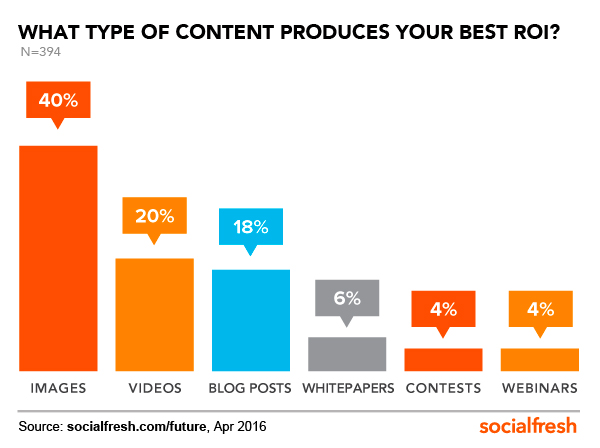
Image via SocialFresh
Reason enough to incorporate video as part of your brand strategy, right?
Related: From Zero to Hero; How To Become a Must-Have Brand
As a practical example, let’s take a look at Code.org[5], whose success is attributed to one smart video that happened to go viral…
Code.org, a nonprofit committed to bringing computer science education to all children, was founded in 2013.
In the video, co-founders Ali and Hadi Partovi interviewed the world’s top entrepreneurs, like Bill Gates and Mark Zuckerberg. They were questioned about their early experiences with computer programming.
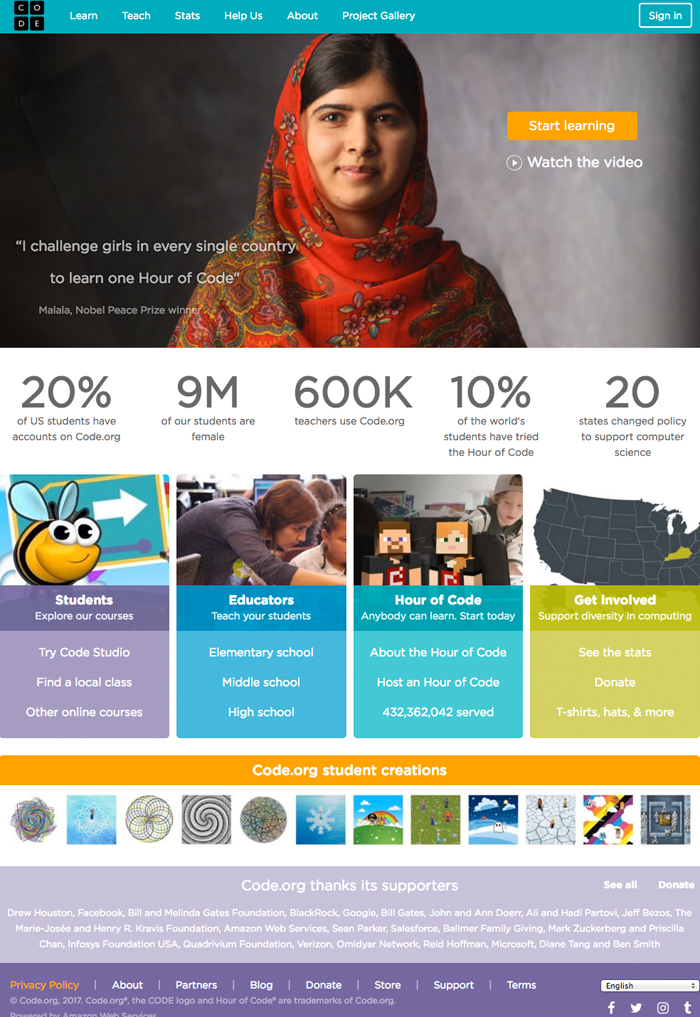
Image via Code.org
The interviews were edited down to a five-minute clip with the purpose of inspiring a new generation of coders and teachers.
The video, titled “What Most Schools Don’t Teach,” reached the number #1 spot on YouTube on its very first day. As a result, 15,000 schools reached out to Ali and Hadi for help after the video went live.
Today, just a few years later, Code.org boasts 15 million student accounts with 10,000 additional created every day.
Being a small non-profit, and to keep expenses down, the videos they distribute today showcase their staff instead of paid actors.
Have a look at their first video which launched their nonprofit:
What separates them from other struggling non-profits, is their strong brand vision which is carried out in everything they do.
Code.org’s brand strategy development has always been simple and consistent: it is to be inspirational to students (the video that went viral certainly is, providing motivation and inspiration to thousands), to “think big but act small”, to be personal, transparent, thankful and community-based. They are good at demonstrating their brand values in clear video brand messages.[6]
Related: Brand Profiling, How Brand Performance and Purpose Are Inextricably Linked
To Use Video To Share Your Brand Message You Don’t Have to be Bill Gates
To use video in your brand message does not mean you have to have the pockets of a Bill Gates. Anyone with a smartphone that can record a video has the means of video marketing!

Image via MarketingWeek
Many small businesses have successfully gained traction with video in various, affordable ways, like:
- Featuring their own employees
- Using their leaders
- Interviewing their customers
- Building brand stories
Related: Brand Stories: 5 Compelling Examples That Sell Themselves
A great example of affordable, but wildly popular branded videos, is Catmantoo who for one of the owner’s videos, got a whopping 7,858,920 views.
Catmantoo is owned by Robert Dollwet, a solopreneur who has no website but shoots videos that people love. They are actually ads, but you wouldn’t know it, which is precisely why they’re so popular. Robert sells all of seven products from his Facebook page[7] which has an extraordinary 959,145 likes:
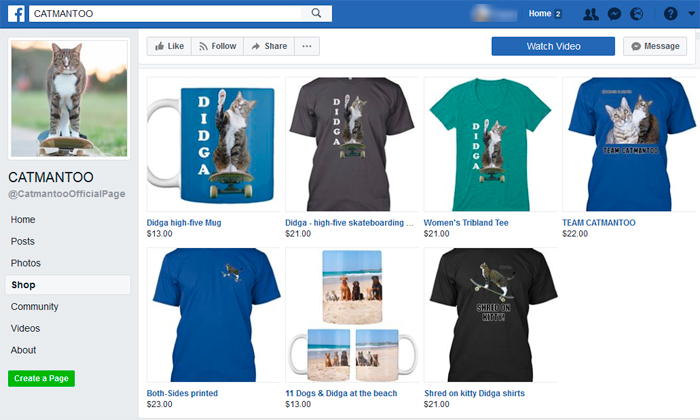
Image via Catmantoo
This entrepreneur uses the animals he trains to make entertaining videos. It’s pretty clear that his online success and cute cats are tightly intertwined; strong personality, compelling storytelling and clever brand strategy which achieves results. All his videos tell a story and then only briefly at the end, mentions Robert as the trainer of all the animals involved. Clever!
Discover how to build your stand out, customer attracting brand personality here so you can grow your business more profitably and faster.
You can demonstrate your product or services and broadcast your brand message just as effectively by video too. The key for video is either to add value, touch hearts or be entertaining because it’s only when you emotionally engage people positively that you’ll move them to buy.
Even the more traditionally conservative B2B service sectors can get it right, just like Taulia[8] who provides a cloud-based invoice, payment, and dynamic discounting management solutions. In a niche not widely recognized for blazing creativity, they’ve managed to carve a place for themselves by building a strong brand personality, creating entertaining videos that become beloved to their primary customers.
Related: Use Humour in Branding to Create Strong Emotional Bonds so You Increase Sales
In amusing worst-case-scenarios, Taulia demonstrates by video what can happen when you don’t use their services, not only giving a laugh but providing a humorous take on a serious B2B solution. Their videos build a connection between their customers, their brand and their company. Their videos have pushed them above their less creative competitors so they stand out and attract their ideal audience.
The proof is in the results – this brand attributes more than $125M[9] in their marketing pipeline to video content, and found that 45% of all closed-won deals had involved prospects watching their videos.[10]
The lesson here is that Taulia creates videos that appeal directly to its target audience. Bhaji Illuminati, Senior Marketing Manager explains, “Rather than trying to make one video that appeals to the entire world, we’ve learned that we can get stronger results by making many videos that appeal to specific audiences.”[11]

Image via MarketingWeek
Their primary branding strategy is to use humour and infuse personality into communications in order to deliver what might otherwise, in another format, be perceived to be a bit heavy going or not get noticed at all by their target audience. With your phone, you can also use Facebook Live to host a live video broadcast, similar to a webinar, to your primary audience and followers and make it a highly interactive experience.
Conclusion
If other entrepreneurs and small business owners have accomplished great success sharing their brand message through videos, so can you. All you need is a smartphone, good planning and a clear, well-developed brand strategy. Find out more about how you can build your brand here.
Questions to consider
- How can you inject vibrant personality into your brand message using video so it stands out and attracts your ideal customers?
- What would your brand look like if it was a store in a mall, what are its key stand out elements to attract your ideal customers and how can you convey that in a video?
- What are the key factors you need to integrate with your brand strategy to increase your sales?
Want to develop your brand so you can increase your profits but you’re not sure where to start to get a successful return on your investment?
If you want direction and support empowering you to transform your brand so it increases your sales then the Persona Brand Building Blueprint™ Mastermind is the perfect fit for you.
This is a two-day brand building intensive shared with a small group of like-minded peers where you work on your brand with our leadership. In fact, over the two days, you reevaluate your brand, codify it and create your brand strategy from the ground up whether you’re revitalising an existing brand or creating a new one.
This is a highly empowering workshop where we take a deep dive, step-by-step into how to build a brand. You discover and apply the systems and methodologies used by some of the world’s greatest brands as you work on your brand under Lorraine Carter’s direction and tutelage so you can grow your own brand and business.
This is not a theory based programme but a highly interactive fast-track course where you work intensively on your brand throughout the programme duration using our ten step system to:
- Completely re-evaluate your brand to make it much stronger so it’s highly visible enabling you to increase your profits
- Map out your brand in full so it’s codified and comprehensively documented to grow your business faster
- You leave with your total brand road map or GPS of your brand empowering you to manage your brand, stand out and attract your ideal customers so you multiply your sales
Outcome: Your brand transformed so you can increase sales.
At the end of the two-day Persona Brand Building Blueprint™ Mastermind you leave with your fully documented brand strategy ready for implementation in your business or organisation.
If your team is larger and you’d like to include everyone’s’ participation in the Persona Brand Building Blueprint™ Mastermind then we also run in-house private client brand building intensives tailored to your specific needs too.
Just drop us a line to [email protected] or give us a call T: +353 1 8322724 (GMT 9:00 – 17:00) to discuss your preferences and we’ll develop your brand building intensive bespoke to your particular brand requirements so that you’re empowered to develop your brand and take your business further a lot faster.
[1] https://www.websitemagazine.com/blog/5-reasons-visitors-leave-your-website
[2] https://blog.hubspot.com/marketing/video-marketing-statistics
[3] https://blog.hubspot.com/marketing/video-marketing-statistics
[4] https://www.ibm.com/think/marketing/social-keeps-mobile-marketing-tactics-current/
[5] http://www.code.org
[6] https://code.org/about/values
[7] https://www.facebook.com/pg/CatmantooOfficialPage/shop/?ref=page_internal
[8] https://taulia.com/en/
[9] http://www.dmnews.com/marketing-strategy/taulia-a-b2b-brand-with-a-strategic-approach-to-video-marketing/article/345971/
[10] https://www.clickz.com/b2b-companies-can-buck-the-norm-and-win-big-in-marketing/26174/
[11] https://www.vidyard.com/blog/how-taulia-became-a-video-marketing-powerhouse/
The Age Of Internal Branding And Selling It From The Inside Out
/0 Comments/in Brand Ambassador, Brand Champions, Brand Culture, Brand Experience, Brand Leadership, Brand Strategy, Brand Values, Branding, Internal Branding /by Lorraine CarterDid you know that internal branding is the best way to get employees to develop a powerful emotional connection to your products or services so they become your top performing brand advocates because effective internal branding increases sales?
That emotional connection with the brand and its culture is what drives more than 2 million[1] people annually to apply to Google for a job.
Google is an unparalleled example of a brand which cultivates cult-like desire to work for them because candidates know that while Google only selects the creme-de-la-creme, the most elite top performers, the company also values their staff as their most important asset and looks after them accordingly. In short, Google understands the power of internal branding strategy, and selling the company from the inside out.
When staff are emotionally vested in the brand, they’re more loyal, motivated, productive, innovative, fulfilled and inspired by a unified sense of purpose.
Related: What’s a Cult Lifestyle Brand, and How do You Create One?
By applying branding principles from the inside first, employees glean a fuller knowledge of the brand and what’s important to it. Employees begin to “live” the vision of the company in their day-to-day tasks. And when employees live that vision in their roles the brand comes alive so your customers experience your brand’s promises to the full.
Related: Top 10 Brands for Customer Experience and What You Can Learn From Them
This article shares with you how to sell your brand from the inside out. But first, to make it more relatable so the theory is transformed into practical application take a look at this video which talks about the concept of internal branding.
The Link Between Employees and Internal Branding
Think about it for a moment, 60% of branding is about perception and only 40% about your product or service so one of the most significant factors influencing customers choices is how they perceive, think and feel about your brand through their interactions with it.
Contrary to what many think, branding is not just a logo or the aesthetics of a company’s website. Branding is the core DNA of your company – what makes it tick, the driving purpose behind everything you do and how you express your stand out brand personality at every touchpoint to engage your customers emotionally.
Because it’s only when you touch the heart that you move the mind so transforming your customers into committed fans, enthusiastic referral partners, word-of-mouth advertisers and repeat purchasers.
Anthony Robbins explains how emotions influence and drive all purchasing decisions masterfully here.
Related: Personality Matters: Bringing Your Brand to Life to Grow Profits
If you want some direction developing your brand and your internal branding then take a look at our brand building programme called the Personality Profile Performer™. This online course takes you through all the key steps you need to implement in building your brand. You can watch a free course preview here.

Build Your Profitable Brand Using The Personality Profile Performer™ Programme with Lorraine Carter
Alternatively, if you want in-person professional direction with expert input to develop your brand and internal branding and would like to discuss working with us then give us a call T: +353 1 8322724 (GMT hours 9:00-17:00) or drop us a line to [email protected]. We’d be delighted to talk with you.
Employees Are Your Internal Brand
The 2016 Edelman Trust Barometer confirms that people trust what employees say about the company more than they trust what the company says about itself. Trust is central to every brand because, without it, people will not buy from you.
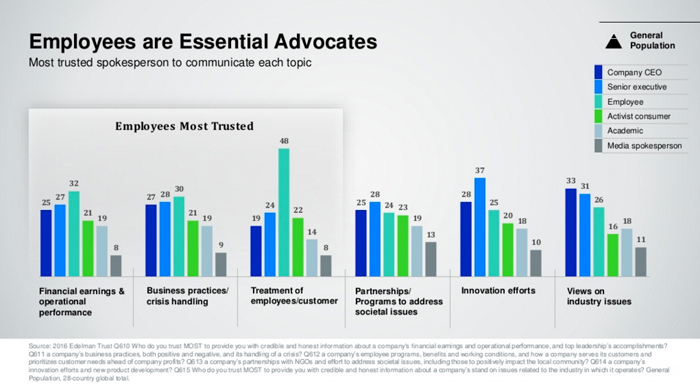
Image via Edelman Insights
When do employees represent, express, becoming living evidence of and talk about your brand? Front-facing staff represent your brand through their interactions with your customers. Non-front facing staff represent your brand when they discuss your company with friends and family and chat about their day on social media. Employees chat amongst themselves about your company — the good, bad and ugly.
Consider this, most of your employees are on social media and are either phenomenal ambassadors for your brand, indifferent workers clocking in time or worse still major detractors undermining your brand reputation.
Related: Top 10 Tips For Managing Your Brand Reputation
The ripple effect and network of influence per employee is extraordinary. It’s up to you to harness this for the greater good with strong internal branding or, through negligence, be at the mercy of come what may. At the very least make brand induction and training integral to what you do so you ensure your team are empowered, feeling and talking positively about your brand. In order for this to occur, your staff need to:
- Express your brand and what it stands for, or aims to stand for — a traditional mission statement won’t cut it because it lacks real-world application
- Identify how their behaviour supports or detracts from the brand
- Synthesise and consequently feel highly motivated to choose the right behaviour for the positive growth of the brand
At its most basic, this is how employees are integral to the internal branding of your company, which sells from the inside and extends to the outside.
Related: Socially Empowered Employees: Are They Key to Building Your Brand Online?
A Common Problem With Internal Branding
The problem is that few leaders understand the need or know how to convince employees of the brand’s “goodness”. Dangerous assumptions including thinking that employees are naturally attached to the brand. This couldn’t be further from the truth.
Related: CEO Brand Leadership: How Vision Drives Brand Growth
Leaders often operate with the mindset that staff are getting paid to do a job and that should be motivation enough. The truth is, if you want a higher performing company, a culture of innovation and growth with increased sales, you have to promote your brand to your employees first through an internal branding strategy, because they are an extension of your brand and take your brand to the outside world.
Related: The Case for Brand Disruption: Be the Disruptor or Be Defeated
The How Of Selling Your Brand From The Inside Out
Going Deeper Than Traditional Vision, Mission and Values
Internal branding is far more than wall hanging statements with the vision, mission and values expostulated on them. If you really want to impact behaviour favourably, you need to develop a culture around your brand vision, mission and values in a relatable, actionable sense so it’s a living expression, on a daily basis, of what you stand for.
Because when a company desires a specific culture that nurtures the positive behaviour of both leadership and employees, it must be carefully developed through brand profiling and brand strategy development. Otherwise, the vision, mission and values end up being superficial nonsense which a best delivers no meaningful or measurable results or worst still undermines the business.
When employees truly buy into your brand vision, mission and values, it drives their behaviour, commitment, performance and sense of fulfilment. In order to achieve this, they need to understand and value how their role in the company fits into and contributes to the overall goals of the business.
Related: Brand Sponsorships, The Best Brand Ambassadors Are Already On Your Payroll
An example of going deeper than a mere superficial listing the company’s vision, mission and values is Teva Pharmaceuticals.
In 1901, three gentlemen started a small wholesale drug distribution centre in Jerusalem.
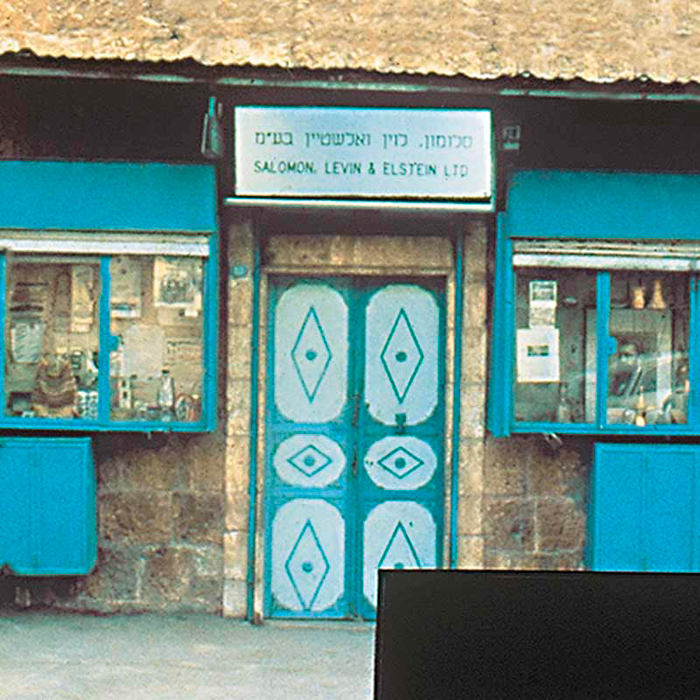
The beginning of what would become Teva Pharmaceuticals in 1901. Image via Teva
Eventually, they moved into drug manufacturing, and between 1980 and 2000, they grew internationally. Today, they are the largest generics pharmaceutical company in the world.
In 2016, with more than 43 000 employees, Teva Pharmaceuticals embarked on a new brand identity strategy[2].
Beck Codner, Group EVP, Corporate Marketing and Communications, said, “Only when we are confident that all our employees are aligned around a shared purpose and how that should be reflected in how we think and how we act, will we be ready to externalise our new brand”.
As part of the new brand strategy, the Teva brand style guide and code of conduct was developed, so that employees would be well informed, empowered and armed with transparent standards to work with and represent the brand.
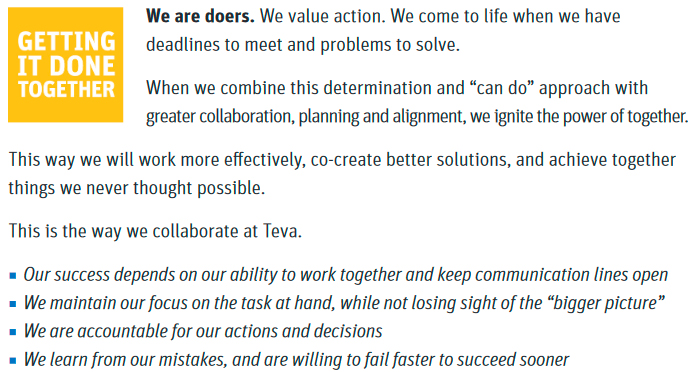
A screenshot of a section of Teva’s new code of conduct, based on their new internal brand strategy. Image Via Teva Pharmaceuticals
Watch Teva’s historical progress:
Focus On Marketing Your Brand Internally First
Whatever brand strategy, marketing or advertising you plan to activate externally, sell it to the inside first, and whatever communication is planned for your external market, customers and stakeholders alike, ensure you inform and induct your leadership team and employees first.
Why bother? Here’s one B2B example for the sake of clarity:
“Before you can do anything to gain success in your business, you’re going to need the buy-in and support of your team. A team is what grows the business. It’s not the technology; it’s not the computers.”
according to Yaniv Masjedi, Vice President of Marketing, Nextiva, a cloud based communication company.[3]
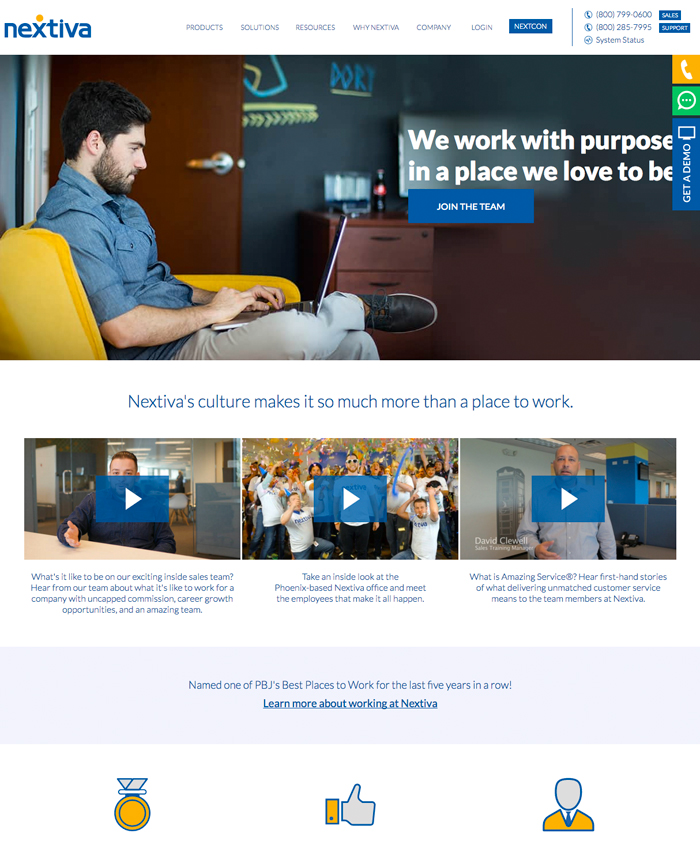
Image via Nextiva
In 2008, when Nextiva just opened its doors with a handful of staff, it was easy to keep people emotionally bonded to each other and the company. As it expanded to 300, with employees situated in other locations and many not knowing the names of fellow colleagues, it became necessary in 2012 to find a way to communicate company news more effectively, without resorting to the old fashioned newsletter.
“NexTV”, a weekly, internal video series was launched. They started small; each week, different employees would gather around a laptop camera to make announcements collected from all departments. Just 2 minutes long, it was uploaded onto YouTube – edit-free – for internal viewing. This killed two birds with one stone, so to speak because people in various locations could see the faces of fellow colleagues, some of whom they had never met, and get the news at the same time.
On average, 74% of Nextiva’s employees watch the series each week, with a 96% engagement rate.
The concept generates office fun and excitement, especially when employees know they’re being featured in the next episode.
Related: The Impact of Company Brand Culture On Driving Performance and Increasing Sales
In 2013, Nextiva started using more sophisticated means of internal communication, but the no-frills laptop camera method certainly achieved its purpose and has become a cornerstone of the company’s brand culture.
An example of one of the NexTV episodes.
Now logically, you’d think to sell change or marketing internally first, is a natural course of action, but for the majority of businesses, it’s not, because its importance is overlooked or forgotten. This is fatal for organisational goals, bottom line performance and sales growth.
Ensure management teams and staff are highly informed, fully engaged and relate to what’s happening before executing strategy externally, and if you make changes, be sure to sell it to them first.
Related: From Zero to Hero; How To Become a Must-Have Brand
Making Your Brand Come Alive for Staff Through Internal Branding
The point of branding – externally as well as internally – is to form an emotional connection with your ideal primary customer. This is why it’s no good simply documenting a dry vision, mission and values statement and filing it away or allowing it to become a wall dust-catcher because that accomplishes nothing. The vision, mission and values have to come alive for every staff member in order to increase performance and sales.
Related: Brand CSR: The Business Case for Successful Branding and Social Good
Staff have to live your brand and feel an emotional connection with it in order to sell it to your ideal customers whether in a formal work capacity or informally through their external life interactions.
Easier said than done; this section alone requires strategic thought: how do you make the brand come alive for your employees?
Firstly, the primary message needs to be introduced and the rationale behind it shared. This must be carefully developed because people are naturally resistant to change. When certain key factors are in place though, it makes the internal brand launch more readily received.
Secondly, the newly refreshed or revitalised brand message needs to be reinforced throughout employee touch points in daily activities. This needs to be strategically planned, just as you would plan a full-on customer marketing strategy.
Questions the brand strategy team needs to consider and plan around are:
- What do employees think of the brand and company?
- What do we want them to think?
- What will convince them of this?
- Why should they believe us?
Once these questions are evaluated and answered, the creation of internal branding collateral can be initiated. You don’t want to convey information, you want to persuade, emotionally engage and motivate. Make it actionable, fun, engaging and interesting.
Related: Brand Renaming: Name and Tagline Change Considerations
The Role of Communication In Internal Branding Strategy
It is often the HR department who execute internal communications when it should be the role of the marketing department who have the skill to market the brand not only to customers but to employees alike.
Communication is key internally, and yet the majority of businesses fail dismally at it.
In the 1980’s, HSBC, one of the largest financial organisations in the world, experienced rapid growth, and as a result, their employees became disconnected amongst themselves, the organisation and its leaders. In addition, the organisation had a traditional top-down approach, which made it just about impossible to obtain feedback from those on the ground. In today’s world, it’s not always an ideal model for a highly innovative, rapidly growing more progressive company which builds with high employee engagement.
The challenge was, how to get 250 000 people in one organisation, to be heard and feel their feedback mattered, and to change the traditional hierarchy?[4]
Enter Exchange Forum; the objective of which was to change the role of management.
Related: Brand Audits – How to Use One to Grow Your Profits
Internally known as the “shut up and listen” project, the forum was kicked off by holding meetings where management needed to “shut up” and listen to what their staff were saying, while saying nothing in return, so that the information would come from the bottom up instead of from the top down, recognizing that employees have opinions and knowledge that would be important to management decisions, especially for strategic changes.
The long term goal is that every employee should attend and participate in at least four “shut up and listen” exchanges each year.
Has the project worked? Take a look at this next video by HSBC titled, “through the eyes of our people”, and then answer this: from this video, does it appear as if employees feel connected now instead of disconnected?
Today, at HSBC, employees feel heard and leaders have learned the value of listening to what their team has to say.
Questions to consider with your internal branding
Is it time to sell your brand more strongly from the inside out? Consider these questions to improve clarity:
- Does your business sell its vision, mission and values to your employees first?
- Is your HR or Marketing department responsible for internal communications and are they integrated — working as a cohesive team?
- Can your staff and leadership articulate what your brand stands for and what makes you different to your competitors?
- Is your brand a living entity with a clear vision underlying at the heart of everything you do? Do your staff know how to incorporate the vision into their daily tasks?
Want to develop your internal branding strategy so you can build your team into your high performing brand champions but you’re not sure where to start to get a successful return on your investment?
Just drop us a line to [email protected] or give us a call T: +353 1 8322724 (GMT 9:00 – 17:00) — we’re here to help.
If you want direction and support transforming your internal branding strategy so it empowers your team and increases sales then the Persona Brand Building Blueprint™ Mastermind is the perfect fit for you.
This is a two-day brand building intensive shared with a small group of like-minded peers where you work on your brand with our leadership. In fact, over the two days, you reevaluate your brand, codify it and create your brand strategy from the ground up whether you’re revitalising an existing brand or creating a new one.
This is a highly empowering workshop where we take a deep dive, step-by-step into how to build a brand. You discover and apply the systems and methodologies used by some of the world’s greatest brands as you work on your brand under Lorraine Carter’s direction and tutelage so you can grow your own brand and business.
This is not a theory based program but a highly interactive fast-track course where you work intensively on your brand throughout the programme duration using our ten step system to:
- Completely re-evaluate your brand to make it much stronger so it’s highly visible enabling you to increase your profits
- Map out your brand in full so it’s codified and comprehensively documented to grow your business faster
- You leave with your total brand road map or GPS of your brand empowering you to manage your brand, stand out and attract your ideal customers so you multiply your sales
Outcome:
Your brand transformed so you can increase sales.
At the end of the two-day Persona Brand Building Blueprint™ Mastermind you leave with your fully documented brand strategy ready for implementation in your business or organisation.
If your team is larger and you’d like to include everyone’s’ participation in the Persona Brand Building Blueprint™ Mastermind then we also run in-house private client brand building intensive programmes too.
Ring us to discuss your brand building preferences
Just drop us a line to [email protected] or give us a call T: +353 1 8322724 (GMT 9:00 – 17:00) to discuss your preferences and we’ll develop your brand building intensive bespoke to your particular brand requirements so that you’re empowered to develop and lead your internal brand building team.
[1] https://www.brazen.com/blog/archive/uncategorized/2-million-people-apply-work-google-year-heres/
[2] http://www.tevapharm.com/news/teva_pharmaceuticals_embarks_on_strategic_corporate_identity_program_to_build_a_global_brand_02_16.aspx
[3] https://www.marketingsherpa.com/article/case-study/internal-marketing-b2b-video
[4] http://www.gatehouse.co.uk/the-employee-communication-revolution-ripping-up-the-rule-book-at-hsbc/
Strategic Brand Partnerships: Does My Brand Look Big in This?
/0 Comments/in Brand Collaboration, Brand Partnerships, Brand Personality, Brand Positioning, Brand Profiling & Positioning, Brand Strategy, Co-Branding, Partnership Branding, Strategic Partnerships /by Lorraine CarterIn branding, it turns out that bigger is better together. In successful strategic brand partnerships, the branding strategy of two plus two can equal five…or more!
Before jumping into bed together, several questions need to be asked – and answered. It’s essential to be clear and consistent about your values and your vision and to bring that conviction to the relationship from the start.
“Relationships between companies begin, grow, and develop—or fail—much like relationships between people”. – Harvard Business Review[1] |
Objectives of Strategic Brand Partnerships
Strategic brand partnerships are a “win-win” for both parties, delivering a great return on investment when done well while reducing marketing spend internally. It’s important to develop SMART* goals though and a plan for tracking and measurement of ROI in advance.
Partnering with the right business achieves:
- Brand recognition
- Increased visibility
- Inherited reputation
- Validity and credibility
- A pathway to an expanded target audience
“No matter how brilliant your mind or strategy, if you’re playing a solo game, you’ll always lose out to a team.” |
* Watch for an upcoming post covering SMART objectives for brand awareness.
10 Things Brands Must Look for in The Right Brand Partnerships
Successful brand partnerships between smaller and larger or better-known brands can work when there are mutual gains and wider distribution to be achieved by both brands. Both partners must examine the opportunity for synergy by first reviewing each of the following:
- Common brand values
- Complementary brand cultures
- Core competencies
- Mutual benefits; a “win-win”
- Alignment between products or services
- Enriched customer experiences
- Articulation of a clear brand road map
- Resources available
- Ability to reach a wider customer audience
- Mutual trust
If your brand is the smaller partner in the relationship then you need to ensure you have your brand fully codified and mapped out so you can critically evaluate who would potentially be a good partner for you.
Ensuring your brand is properly profiled with its personality, positioning and purpose fully articulated and documented means you’re also more fully equipped on an equal footing to engage with the larger player because they will have all their brand essentials including their brand guidelines fully documented so you want to level the playing field before approaching the deal!
If you want some direction developing your brand and your brand partnership strategy then take a look at our brand building programme called the Personality Profile Performer™. This online course takes you through all the key steps you need to implement in building your brand. You can watch a free course preview here.

Build Your Stand Out Customer Attracting Brand Using The Personality Profile Performer™ Programme with Lorraine Carter
Alternatively, if you want in-person professional direction with expert input to develop your brand and brand partnership strategy and would like to discuss working with us then give us a call T: +353 1 8322724 (GMT hours 9:00-17:00) or drop us a line to [email protected]. We’d be delighted to talk with you.
Related: How to Use Brand Positioning to Build Brand Impact in an Overcrowded Market
Successful Mixed-Size, Mixed-Use Brand Partnerships
Sometimes a brand partnership appears unlikely at first glance. A beverage and a nail polish; a social network and an airline; a music app and yogurt. How and why are these brand partnerships workable? Or even utterly brilliant?
The biggest innovation in media prize went to Burger King when the fast food brand sassily and publicly pitched McDonald’s. The much bigger, better funded golden arches folks declined to co-brand “McWhopper” for a day. Let’s take a closer look at each example.
| PARTNER 1 | PARTNER 2 | BRAND 1 | BRAND 2 |
| Destination | Satellite & Cable TV | NYC & Co. | Nickelodeon |
| Top end designer | High Street retailer | Karl Lagerfeld | H&M |
| Music app | Yogurt | Spotify UK | Danone “Light & Free” |
| Social network | Museums | UNESCO #Museum Week | |
| Soft drink | Nail varnish | Coca-Cola | OPI |
| Online dating | Airline | Tinder | Delta Air Lines |
| Ride Share app | Fast food giant | Lyft | Taco Bell |
| Fast food giant | Fast food giant | McDonald’s | Burger King |
Related: Co-Branding: 13 Tips for Growing Your Brand Through Strategic Partnerships
Take a look at these brand partnerships a bit more closely because there are valuable learnings and takeaways you can apply to grow your business too.
NYC & Co. | Nickelodeon
Brand Partners:
NYC & Company, New York City’s official destination marketing organization, announced Nickelodeon’s Teenage Mutant Ninja Turtles will continue their role in 2017 as Official NYC Family Ambassadors. The co-branded national ad campaign highlights New York City as a family-friendly destination. Its activation allows visitors to pick a turtle to explore a topic.
Why It Works:
It’s fun. A popular, compelling cartoon family become the official brand ambassadors and tour guides for real families who make up about one-third of NYC’s 60 million annual visitors. The campaign’s activation allows kids to pick a turtle to explore a content topic.
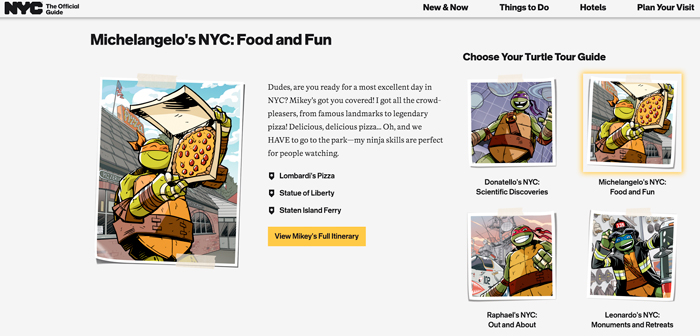
Image via nycgo – NYC Turtles
Related: Personality Matters, Bringing Your Brand to Life to Grow Your Profits
Karl Lagerfeld | H&M
Brand Partners:
The collaboration that changed everything is revived once or twice a year with other top-end designer brands. It seemed incredible when introduced in 2004[3], a partnership between Karl Lagerfeld, haute couture fashion icon, and a mass market clothing chain. The in-store collection that was meant to last two weeks sold out to frenzied shoppers in 25 minutes in many of the retailer’s 1,000 locations.[4]
Why It Works:
Initially shocking, now it’s cool to make luxury apparel affordable. Both brands have reached new markets. The choice of designer is kept quiet in advance, and the collections’ resale market is as vibrant as the pieces that fly out the doors on opening day.
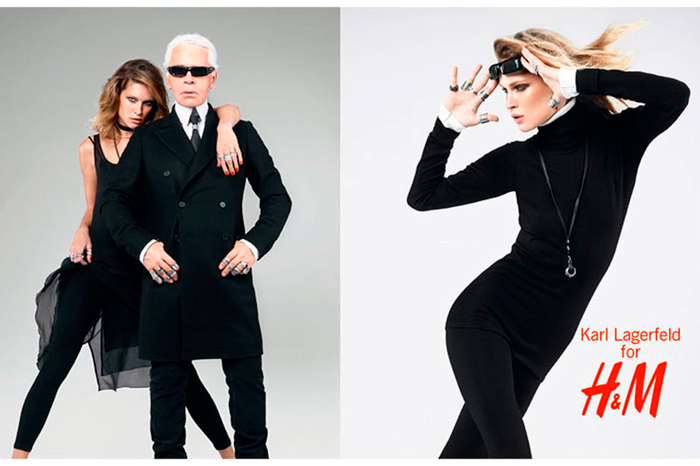
Image via Harper’s Bazar UK
Spotify | Danone
Brand Partners:
What does yogurt sound like? Danone signed a year-long deal to associate its ‘Light & Free’ brand with Spotify ‘Chill’ moments, targeting listeners, artists, and influencers to create chillout playlists with ads for yoghurt.
Why It Works:
Pairing up products with moods resembles the way music reflects moods. Both brands suggested that consumers “really enjoy the feeling of ‘Light & Free’ at first hand.”
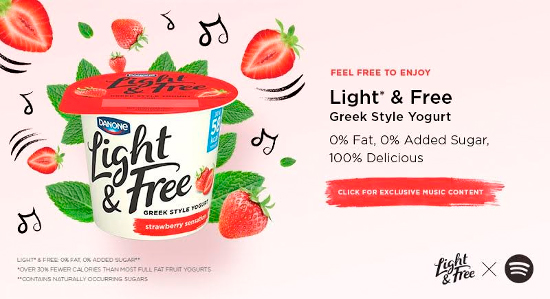
Image via Event Magazine, Danone, Spotify
Twitter | Museum Week
Brand Partners:
The first-ever #MuseumWeek launched in 2014 with Twitter as a partner. Hundreds of cultural institutions and heritage landmarks across Europe tweeted out 140-character bursts of inside information, facts and trivia to promote sharing and pique curiosity. Powered by UNESCO, it’s an annual success.
Why It Works:
Nobody gets museum fatigue. Twitter is the perfect partner for pumping out fascinating, compelling conversation-starter tidbits: “Did you know a bluestone weighs 2 tons, the same as 22 sheep?”
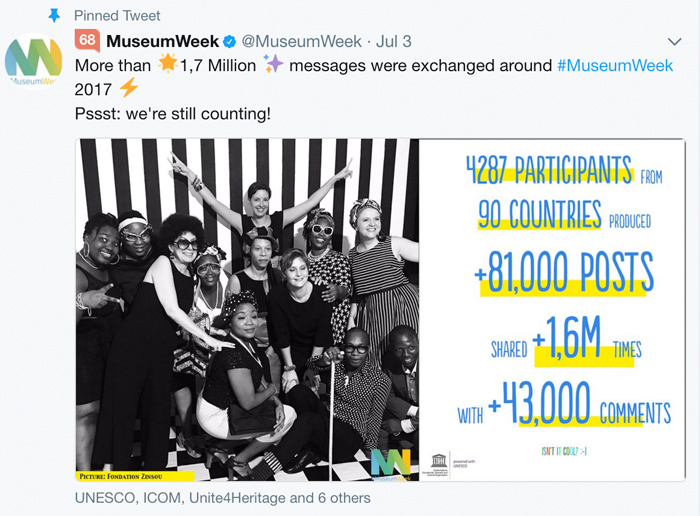
Image via Twitter
Coca-Cola | OPI
Brand Partners:
Paint your nails a flavour? Coca-Cola Red, of course. ABC News reported, “It may seem like an oddball pairing, but the connection between Coca-Cola and beauty products is not unprecedented…Coca-Cola said that partnerships with nail polish and lipstick brands actually date back to the 1940s. More recent products include Bonne Bell’s Coca-Cola flavoured lip balms.”[5]
Why It Works:
Both brands are pitching happiness in a bottle to an important female customer segment. For the nail polish, the association says, “I’m a classic.” For Coca-Cola, the association says, “I’m hip and happening.”
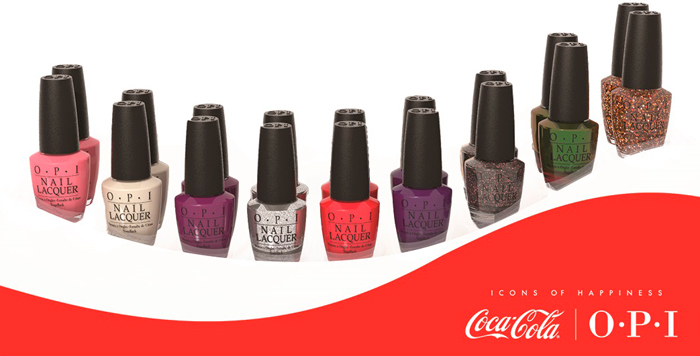
Tinder | Delta Air Lines
Brand Partners:
Delta’s promotional partner Tinder says, “World travellers are more likely to be swiped right.” On their Facebook page, AdWeek proclaims “Bravo, Delta.” The creative teams painted famous international landmarks on a Brooklyn, NY #DeltaDatingWall for selfies.
Why It Works:
Because travel is a turn-on. Because selfies are instantly shareable. And because data supports the validity of the claim. Both partners reach a prime customer audience in a densely populated, trendy neighbourhood.
- 62 percent of men and 74 percent of women want a partner who shares their travel interests
- 1 in 2 singles say travelling is one of their favourite things to do
- 1 in 2 singles say travelling to a new city to meet a date would be exciting
- 1 in 3 singles ranked travel as a top priority in 2017
- 57 percent of singles take 1+ vacations year
- 1 in 3 singles try to go somewhere different for vacation every time they travel
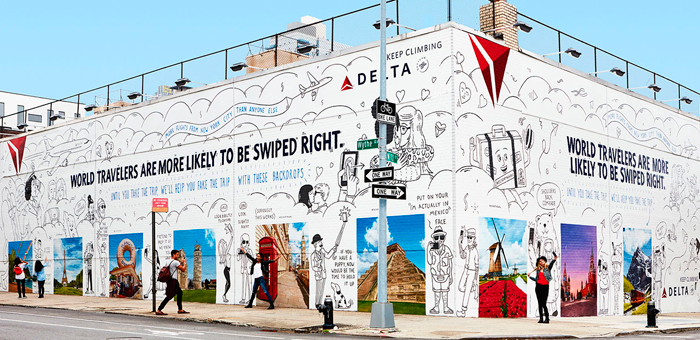
Image via AdWeek
Lyft | Taco Bell
Brand Partners:
Lyft (a Uber competitor) is partnering with Taco Bell to satisfy your late night hunger pangs. Taco Mode encourages Lyft riders to make a pit stop at a California Taco Bell fast food location for a free Doritos Locos Taco before reaching their final destination. Request to be collected in a Taco-themed car between 21:00 p.m. to 2 a.m.
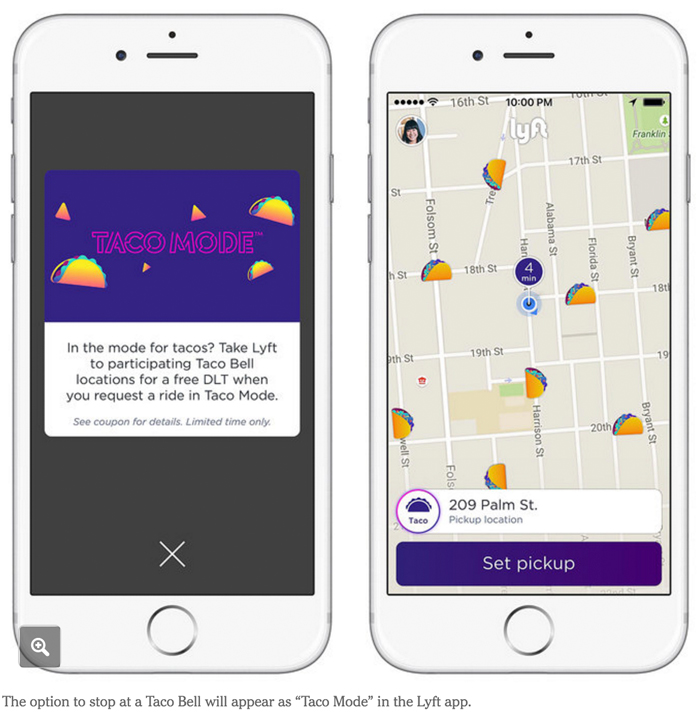
Image via New York Times
Why It Works:
The emphasis is squarely on the customer experience. Taco Bell tells the New York Times[6] this partnership represents a new type of “experience innovation,”[7] delivering customers to the food instead of vice versa.
McDonald’s | Burger King
In the best partnership that never happened, Burger King got everyone talking when they publicly proposed a ceasefire on burger wars in an open letter to McDonald’s. In full page ads, Burger King suggested a hybrid McWhopper to mark World Peace Day. While McDonald’s rejected the tongue-in-cheek partnership, BK’s 2016 print campaign won a Grand Prix at the Cannes Lions festival. (Just what Burger King wanted: Attention!)
Related: Use Humour in Branding to Create Strong Emotional Bonds so You Increase Sales
SMEs and Co-Branding – Leverage These Brand Partnership Ideas to Grow Your Business
Strategic partnership brand strategy can be especially fruitful for startups and small-to-medium sized companies that find the right collaborator in a bigger brand. By engaging with a like-minded big brand buddy, a smaller brand can build traction, momentum, and credibility while stretching their branding budget.
This works especially well when a bigger brand is launching in a new market, hence it must behave like a small brand, as there’s not yet brand awareness. Carabao Energy Drink was unknown when it was recently introduced in Europe while enjoying a strong second place standing in its category in Thailand with 21 percent market share.
However, small and big isn’t an exclusive combination solution. Two small brands or two big brands can also support one another very effectively as evidenced here in the four case studies detailed below.
| PARTNER 1 | PARTNER 2 | BRAND 1 | BRAND 2 |
| Energy drink | Sports teams | Carabao Energy Drink | English Football League |
| Online dating | Dining app | Match.com | Grub Club |
| Destination | Bank | Tourism Authority of Thailand | Krungthai Bank |
| Supermarket chain | TV show | Coles (Australia) | MasterChef (Australia) |
Related: From Zero to Hero, How to Become a Must-Have Brand
Want to develop your strategic partnerships branding strategy so you can grow your brand awareness, increase your sales, expand your market reach but you’re not sure where to start to get a successful return on your investment?
Just drop us a line to [email protected] or give us a call T: +353 1 8322724 (GMT 9:00 – 17:00) — we’re here to help.
If you want direction and support transforming your internal branding strategy so it empowers your team and increases sales then the Persona Brand Building Blueprint™ Mastermind is the perfect fit for you.
This is a two-day brand building intensive shared with a small group of like-minded peers where you work on your brand with our leadership. In fact, over the two days, you reevaluate your brand, codify it and create your brand strategy from the ground up whether you’re revitalising an existing brand or creating a new one.
This is a highly empowering workshop where we take a deep dive, step-by-step into how to build a brand. You discover and apply the systems and methodologies used by some of the world’s greatest brands as you work on your brand under Lorraine Carter’s direction and tutelage so you can grow your own brand and business.
This is not a theory based program but a highly interactive fast-track course where you work intensively on your brand throughout the programme duration using our ten step system to:
- Completely re-evaluate your brand to make it much stronger so it’s highly visible enabling you to increase your profits
- Map out your brand in full so it’s codified and comprehensively documented to grow your business faster
- You leave with your total brand road map or GPS of your brand empowering you to manage your brand, stand out and attract your ideal customers so you multiply your sales
Outcome:
Your brand transformed so you can increase sales.
At the end of the two-day Persona Brand Building Blueprint™ Mastermind you leave with your fully documented brand strategy ready for implementation in your business or organisation.
If your team is larger and you’d like to include everyone’s’ participation in the Persona Brand Building Blueprint™ Mastermind then we also run in-house private client brand building intensive programmes too.
Ring us to discuss your brand building preferences
Just drop us a line to [email protected] or give us a call T: +353 1 8322724 (GMT 9:00 – 17:00) to discuss your preferences and we’ll develop your brand building intensive bespoke to your particular brand requirements so that you’re empowered to develop and lead your internal brand building team.
Related: How Do Challenger Brands Become Market Leaders?
Carabao | English Football League
Brand Partners:
Carabao is a Thai energy drink with good market share. However, the brand was unknown in the UK, part of its European launch. Carabao is a principal partner of both Reading FC and Chelsea FC.
Why It Works:
Pro sports and energy drink are an obvious dynamic pairing. The English Football League and its 92 member clubs got a shot of adrenaline when Carabao signed on for three years of title sponsorship. Carabao got instant brand recognition as a major player in its new territory.[8]
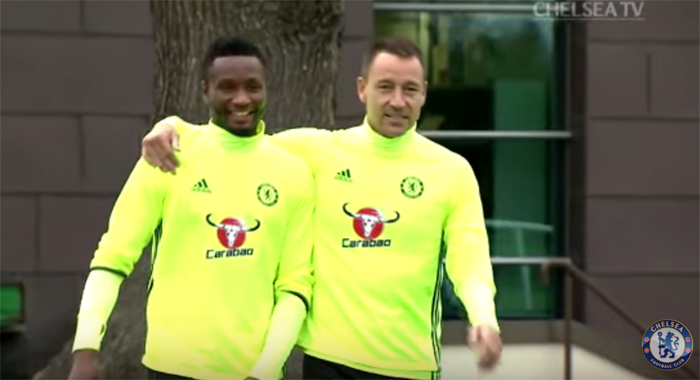
Image via Chelsea FC TV
Match.com | Grub Club
Brand Partners:
Grub Club connects chefs with underused spaces for pop-up dining. Diners are delighted by quality food in quirky places. The supper club startup was founded in London in 2013. Grub Club hosted an après ski-themed evening with Match.com, one of the largest dating sites.
Why It Works:
Dinner = Date Night. Even if it’s over the top for a first date, Grub Hub engages with an established like-minded web-based company that acts as a big brand buddy, helping them build brand momentum and credibility. The bigger brand gets access to a closely aligned niche.
“Very few startups have any marketing budget so the only way to get your brand out there is by setting up strategic partnerships with companies big and small.”[9] – Siddarth Vijayakumar, Co-founder of Grub Club |
Related: The Case for Brand Disruption, Be The Disruptor or Be Defeated
Tourism Authority of Thailand | Krungthai Bank
Brand Partners:
Medical tourism meets beach holidays. The largest bank in Thailand partnered up with the national tourism office to promote the destination for people who combine treatment with travel.
It’s a large and growing international trend, and Thailand is a leader in the market.
Why It Works:
A health and wellness website[10] highlights popular treatments available in Thailand as well as providers. The bank offers tourists the Miracle Thailand Card, a free visitors’ debit card that carries some medical and life insurance coverage and is accepted at 286 hospitals.

Image via Thailand Tourism
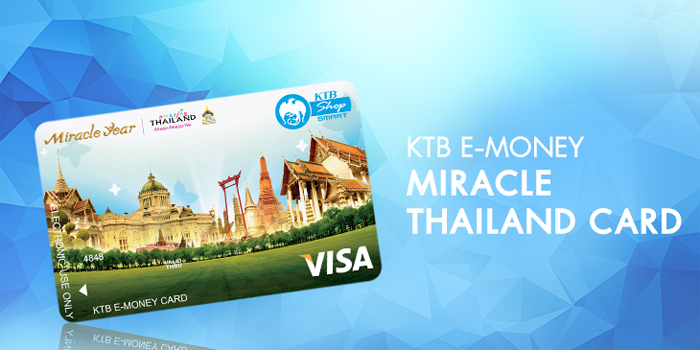
Image via Krungthai Bank
Related: Brand Management: Top 10 Tips for Managing Your Brand Reputation
Coles | MasterChef
Brand Partners:
Business surged when the Western Australian supermarket chain launched “To cook like a MasterChef cooks, shop where a MasterChef shops” as a campaign tied to recipes used on the reality TV show.
Why It Works:
How about a 30 percent uptake overnight in the meat sales for a MasterChef beef stroganoff dish?[11] From spices to cooking equipment, the grocery store chain says revenue is soaring. For MasterChef, the positive impact on expanded viewing audiences tuning in for the next bright cooking idea is built right into this “win-win” partnership. After all, everyone regularly goes grocery shopping.
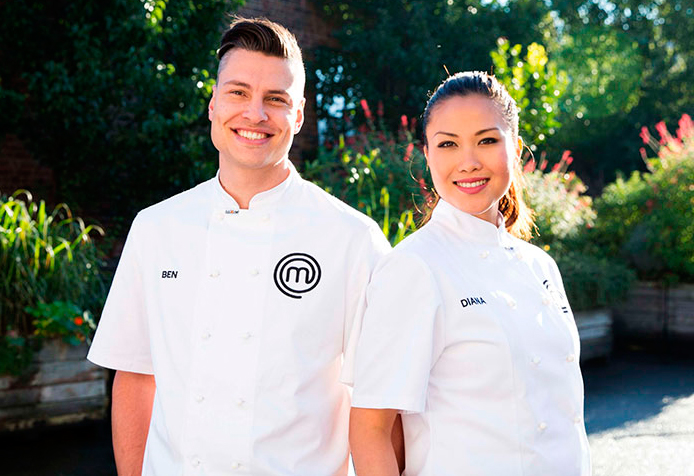
Image via TenPlay TV MasterChef
So the question is, have you considered strategic brand partnerships to increase your brand awareness, market reach and sales? Scale and size is not an excuse because this is a brand strategy open to large and small with innovative thinking — once you have a few fundamentals in place, like codifying your brand as previously mentioned.
Consider Strategic Brand Partnerships to Increase Your Customer Base and Grow Your Sales Fast
- Do you have a marketing budget dedicated to brand partnership opportunities?
- Do you have clear objectives in mind for a potential co-branding campaign?
- Do you have one or more potential co-branding partners in mind for your business?
- What innovative co-branding or brand partnerships have impressed you lately?
Related: Brand Profiling, How Brand Performance and Purpose Are Inextricably Linked
[1] https://hbr.org/1994/07/collaborative-advantage-the-art-of-alliances
[2] https://www.forbes.com/sites/danschawbel/2012/02/14/10-memorable-quotes-from-the-start-up-of-you/#1b2295315b3c
[3] http://about.hm.com/en/media/news/karl_lagerfeld_and_hm.html
[4] http://wwd.com/fashion-news/fashion-features/truly-fast-fashion-h-m-8217-s-lagerfeld-line-sells-out-in-hours-593089
[5] http://abcnews.go.com/Lifestyle/coca-cola-manicure/story?id=23713099
[6] https://www.nytimes.com/2017/07/25/business/media/lyft-taco-bell.html
[7] https://www.youtube.com/watch?v=brJoJlRu_0Y
[8] https://www.youtube.com/watch?v=DBggju4mBGE
[9] https://www.marketingweek.com/2014/02/12/start-ups-and-big-brands-join-forces-for-mutually-beneficial-partnerships/
[10] http://thailandmedtourism.tourismthailand.org
[11] http://www.theaustralian.com.au/business/media/masterchef-sparks-coles-sales-surge/news-story/e6ef72e4b4f1793a9bd453fc7936970d
About
Persona Branding & Design Consultants
Contact: Lorraine Carter
T: +353 1 832 2724
Carra House
Howth, Co. Dublin, Ireland
Copyright © 2007-2022 All rights reserved.
Persona Design Consultants Ltd.
Registered in Ireland: No. 201997
Member of



